Cure for finger infection. Comprehensive Guide to Finger Infections: Types, Symptoms, and Treatments
What are the common types of finger infections. How can you identify the symptoms of a finger infection. What are the most effective treatments for various finger infections. When should you seek medical attention for a finger infection. How can you prevent finger infections at home.
Understanding Finger Infections: An Overview
Finger infections are common ailments that can range from minor nuisances to serious medical conditions requiring immediate attention. These infections occur when bacteria or other microorganisms enter the skin through cuts, punctures, or other injuries. Given the frequent use of our hands in daily activities, fingers are particularly susceptible to infections.
The severity of finger infections can vary greatly, from superficial skin irritations to deep-tissue infections that can potentially lead to long-term complications if left untreated. Understanding the different types of finger infections, their symptoms, and appropriate treatment options is crucial for proper care and prevention of more serious issues.

Common Types of Finger Infections
Finger infections come in various forms, each with distinct characteristics and potential complications. Here are some of the most frequently encountered types:
Paronychia
Paronychia is an infection of the skin around the nail. It can be acute (short-term) or chronic (long-term) and is often caused by bacteria or fungi. Symptoms include redness, swelling, and tenderness around the nail fold.
Felon
A felon is a serious infection that affects the pulp or pad of the fingertip. It typically results from a puncture wound or an untreated paronychia. Felons can cause severe pain, swelling, and even abscess formation.
Herpetic Whitlow
This viral infection is caused by the herpes simplex virus (HSV-1 or HSV-2). It presents as painful blisters on the fingers or thumbs and is often seen in healthcare workers or individuals with oral herpes.
Cellulitis
Cellulitis is a bacterial skin infection that can affect any part of the finger or hand. It causes redness, swelling, and warmth in the affected area and can spread rapidly if not treated promptly.

Infectious Flexor Tenosynovitis
This is a serious infection of the tendon sheath that runs along the palm side of the fingers. It’s often caused by puncture wounds and requires immediate medical attention to prevent permanent damage.
Deep Space Infections
These infections occur in the deeper tissues of the hand and fingers, often as a result of untreated surface infections. They can be severe and may require surgical intervention.
Recognizing the Symptoms of Finger Infections
Early detection of finger infections is crucial for effective treatment. While symptoms can vary depending on the type and severity of the infection, some common signs to watch for include:
- Redness and swelling around the affected area
- Pain or tenderness, especially when touching or applying pressure
- Warmth in the infected finger
- Pus or fluid discharge
- Fever or chills (in more severe cases)
- Limited range of motion in the affected finger
- Skin discoloration or streaking
Is it possible to differentiate between various finger infections based on symptoms alone? While some infections have distinct characteristics, many share similar symptoms. Therefore, professional medical evaluation is often necessary for an accurate diagnosis, especially in more severe cases.

Home Care for Minor Finger Infections
For very minor infections, particularly in the early stages of paronychia, home care may be appropriate. However, it’s important to monitor the condition closely and seek medical attention if symptoms worsen or fail to improve. Here are some home care strategies:
- Warm water soaks: Soak the affected finger in warm water for 15-20 minutes, 3-4 times a day.
- Over-the-counter antibiotic ointment: Apply as directed after soaking and drying the area.
- Elevation: Keep the hand elevated to reduce swelling and promote healing.
- Avoid further injury: Protect the infected area from additional trauma.
Can home remedies cure all finger infections? No, home remedies are suitable only for very minor infections. Most finger infections require professional medical treatment to prevent complications and ensure proper healing.
When to Seek Medical Attention for Finger Infections
Knowing when to consult a healthcare professional is crucial in managing finger infections. Seek immediate medical attention if:
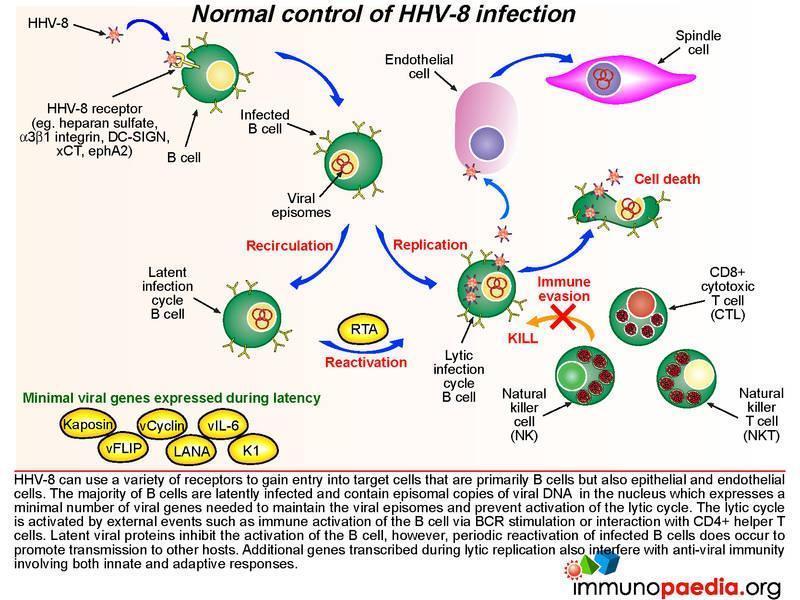
- Symptoms worsen or fail to improve after 1-2 days of home care
- You have a pre-existing condition like diabetes that may complicate healing
- The infection appears to be spreading beyond the initial site
- You experience severe pain, fever, or chills
- There’s significant swelling, redness, or pus formation
- You notice red streaks extending from the infected area
- You have limited mobility in the affected finger or hand
Why is prompt medical attention important for finger infections? Delay in treatment can lead to more serious complications, including potential disability or loss of finger function. Early intervention can prevent the spread of infection and ensure faster recovery.
Medical Treatments for Finger Infections
The treatment approach for finger infections depends on the type and severity of the infection. Medical professionals may employ various strategies to address the condition:
Antibiotics
Oral or intravenous antibiotics are often prescribed to combat bacterial infections. The choice of antibiotic depends on the suspected causative organism and the severity of the infection.
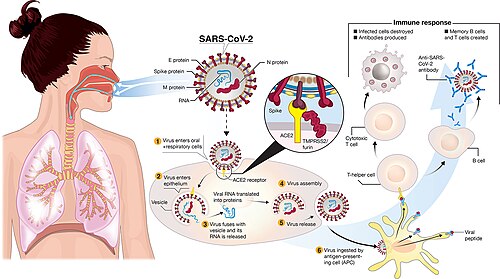
Incision and Drainage
For infections that have formed abscesses or pus collections, a minor surgical procedure may be necessary to drain the infected material. This is commonly done for felons and some cases of paronychia.
Wound Care
Proper wound care is essential for healing. This may include regular cleaning, application of topical medications, and appropriate dressing changes.
Antiviral Medications
For viral infections like herpetic whitlow, antiviral drugs such as acyclovir or valacyclovir may be prescribed to shorten the duration of the illness.
Pain Management
Pain relievers may be recommended to manage discomfort associated with the infection.
Surgical Intervention
In severe cases, especially for deep space infections or infectious flexor tenosynovitis, more extensive surgical procedures may be necessary to remove infected tissue and prevent further spread.
How long does it take for a finger infection to heal with proper treatment? The healing time can vary depending on the type and severity of the infection, as well as the patient’s overall health. Minor infections may resolve in a few days to a week, while more severe cases can take several weeks to heal completely.
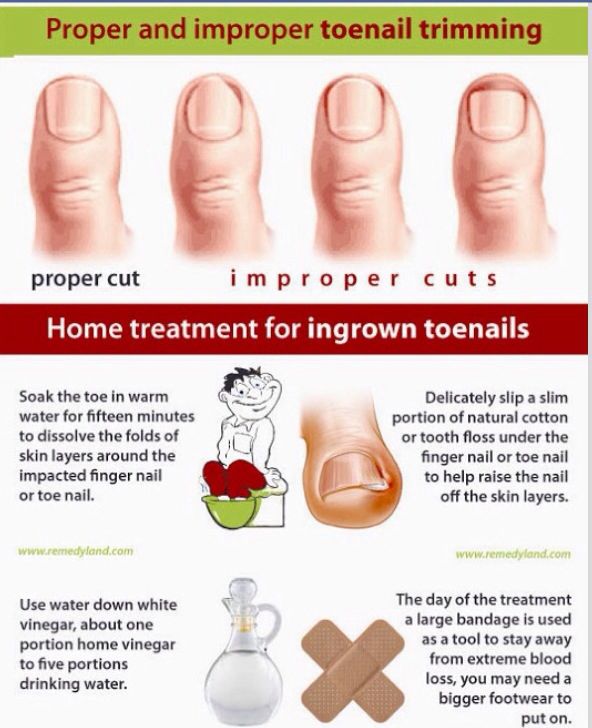
Preventing Finger Infections: Best Practices
Prevention is always preferable to treatment when it comes to finger infections. Here are some strategies to reduce the risk of developing these infections:
- Practice good hand hygiene by washing hands frequently with soap and water
- Avoid biting nails or picking at hangnails
- Wear protective gloves when working with harsh chemicals or in environments that may cause cuts or abrasions
- Moisturize hands regularly to prevent dry, cracked skin
- Treat cuts, scrapes, and other minor injuries promptly
- Avoid cutting cuticles too short during manicures
- Keep tools clean when performing at-home nail care
- Manage underlying conditions like diabetes that can increase infection risk
Are some individuals more susceptible to finger infections? Yes, people with certain medical conditions such as diabetes, peripheral vascular disease, or weakened immune systems may be at higher risk for developing finger infections. These individuals should be particularly vigilant about hand care and seek medical attention promptly if signs of infection appear.
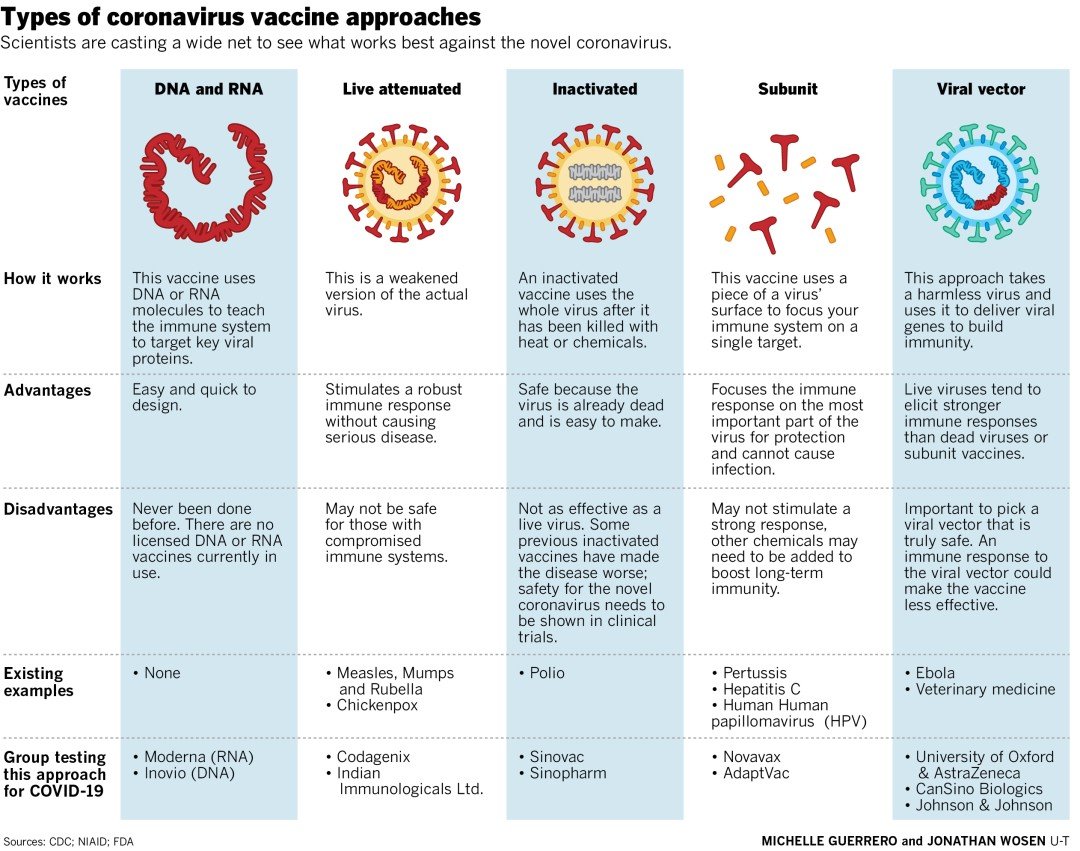
Long-Term Implications of Untreated Finger Infections
Failing to address finger infections promptly can lead to serious complications. Some potential long-term consequences include:
- Permanent nail deformity or loss
- Spread of infection to deeper tissues or bones
- Impaired finger or hand function
- Development of chronic pain
- Tissue necrosis requiring amputation in severe cases
- Systemic infection or sepsis
Can all complications from finger infections be reversed? While many complications can be successfully treated, some may result in permanent damage, especially if treatment is significantly delayed. This underscores the importance of early intervention and proper care for finger infections.
Understanding the various types of finger infections, their symptoms, and appropriate treatments is crucial for maintaining hand health. By recognizing the signs of infection early and seeking timely medical attention, individuals can prevent minor issues from developing into more serious problems. Additionally, practicing good hand hygiene and taking preventive measures can significantly reduce the risk of developing finger infections in the first place.

Remember, while some minor infections may respond to home care, many require professional medical treatment. When in doubt, it’s always best to consult with a healthcare provider to ensure proper diagnosis and treatment. By staying informed and proactive, you can protect your fingers and maintain optimal hand function for years to come.
First Aid Information for Finger Infection
Treating a Finger Infection at Home
Because finger infections have the potential to become severe, home care is limited. A very minor paronychia may be managed at home if you have no other complicating medical illness, such as diabetes. All of the other infections require urgent evaluation and treatment by a doctor. Because delay in treatment may result in disability or loss of the finger, you should not hesitate to obtain medical care.
A small, simple paronychia may respond to frequent warm water soaks, application of over-the-counter antibiotic ointment, and elevation of the hand. However, if no improvement is noticed in one to two days, you should see your doctor at once.
Medical Treatment for Finger Infections
The mainstay of treatment for finger infections is antibiotics and proper wound care. The proper wound care varies for each of the different infections. This can range from a simple incision and drainage of the wound to an extensive surgical exploration of the wound to remove as much infected material as possible.
Continued
Some of the infections can be treated as an outpatient, but several will require inpatient treatment and intravenous antibiotics. Because the organisms that cause these infections are similar, many of the same types of antibiotics may be used.
- Paronychia: Often the wound may be treated with wound care alone. If a collection of pus is present, it will need to be drained. This may be done in several different ways. Commonly a scalpel is used to make a simple incision over the collection of pus to allow drainage. Or the scalpel may be inserted along the edge of the nail to allow drainage. If the infection is large, a part of the nail may be removed. If this procedure is required, the doctor will inject a local anesthetic at the base of the finger that will provide for a pain-free procedure. Most often, you will be placed on an oral antibiotic. You will then be instructed how to take care of the wound at home. (See paronychia)
- Felon: Often incision and drainage is required because the infection develops within the multiple compartments of the fingertip pad.
 Usually an incision will be made on one or both sides of the fingertip. The doctor will then insert an instrument into the wound and break up the compartments to aid in the drainage. Sometimes a piece of rubber tubing or gauze will be placed into the wound to aid the initial drainage. The wound may also be flushed out with a sterile solution to remove as much debris as possible. These infections will require antibiotics. The wound will then require specific home care as prescribed by your doctor.
Usually an incision will be made on one or both sides of the fingertip. The doctor will then insert an instrument into the wound and break up the compartments to aid in the drainage. Sometimes a piece of rubber tubing or gauze will be placed into the wound to aid the initial drainage. The wound may also be flushed out with a sterile solution to remove as much debris as possible. These infections will require antibiotics. The wound will then require specific home care as prescribed by your doctor. - Herpetic whitlow: Antiviral drugs such as acyclovir (Zovirax) or valacyclovir (Valtrex) may shorten the duration of illness. Pain medication is often needed. The wound must be properly protected to prevent a secondary bacterial infection and to prevent you from infecting other sites on your body or other people. Incision and drainage are not indicated and, if done, may actually delay healing.
- Cellulitis: This infection is superficial, and oral antibiotics are usually sufficient.
 If the area is extensive or your immune system is weakened, then you may be treated in the hospital with intravenous antibiotics.
If the area is extensive or your immune system is weakened, then you may be treated in the hospital with intravenous antibiotics. - Infectious flexor tenosynovitis: This is a surgical emergency and will require rapid treatment, hospital admission, and early treatment with intravenous antibiotics. Usually the area will need to be surgically opened and all debris and infected material removed. Because of the intricate nature of the fingers and hands, a hand surgeon will usually perform this procedure. After surgery, several days of intravenous antibiotics will be required followed by a course of oral antibiotics.
- Deep space infections: Much like flexor tenosynovitis, this can require emergency care. If the infection is mild, then only oral antibiotics will be needed. If more severe, a hand surgeon should evaluate the wound and intravenous antibiotics begun. Often these wounds will require incision and drainage followed by a course of antibiotics.
Finger infection: Types, symptoms, and treatment
A finger infection is a common problem.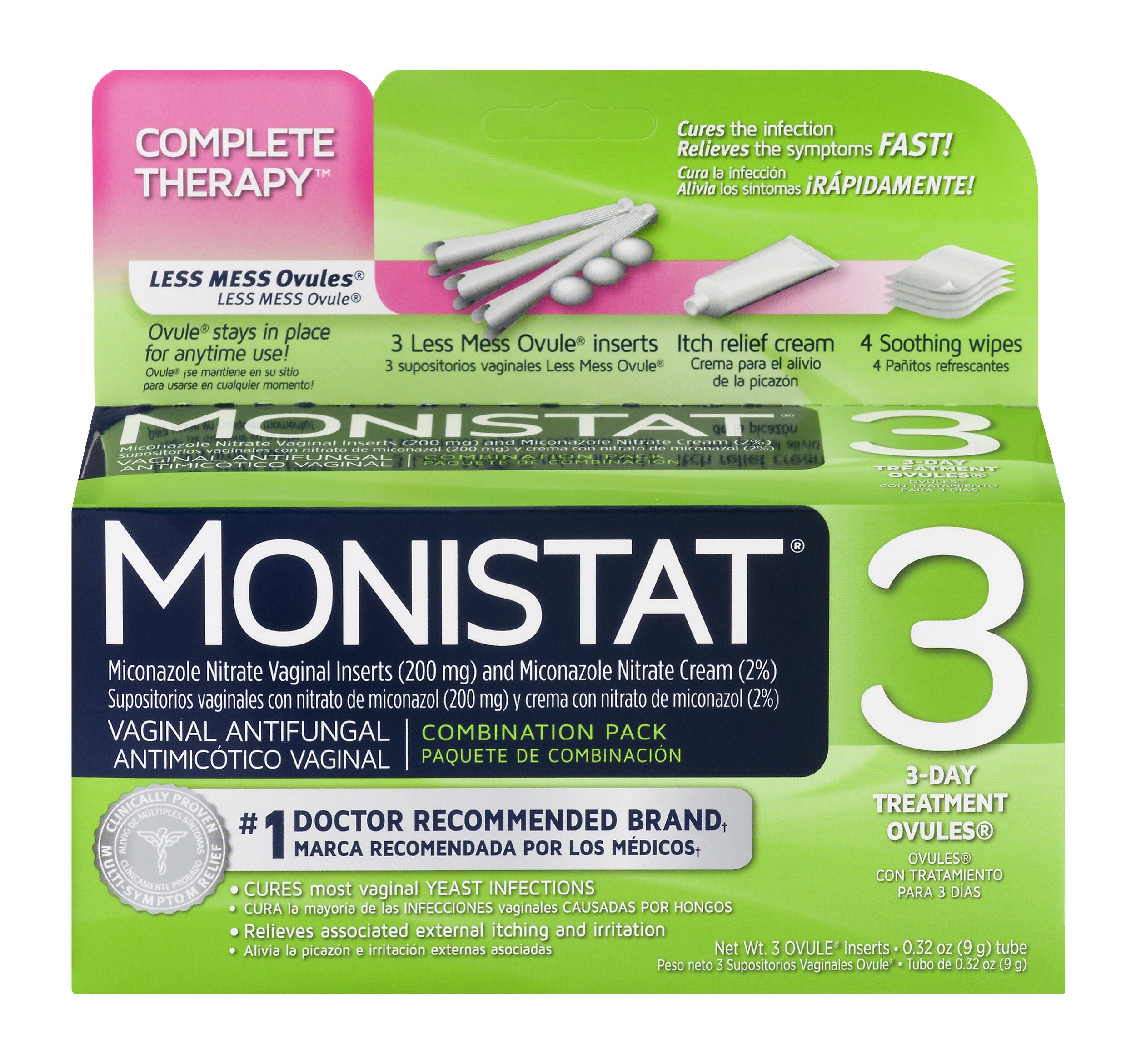 The hands are an important way for humans to interact with the world around them.
The hands are an important way for humans to interact with the world around them.
They are more likely to come into contact with infectious bacteria and other germs because of this, which can lead to infection.
A finger infection will usually start out small and grow with time. There are different types of infections, and serious complications can occur if they are left untreated. Prevention is important, as well as knowing when to see a doctor.
There are many different types of infections, each with their own causes and symptoms.
Felon
A felon is an infection at the tip of the finger. The infection takes over the pad of the fingertip and the soft tissue around it.
Cellulitis
Cellulitis is an infection on the surface of the skin. It usually does not involve the deeper levels of tissue on the hand or finger.
Paronychia
Paronychia is an infection of a hangnail on the finger. The tissues on the edges of the finger near the nail root provide the perfect place for bacteria to enter. It is the most common infection of the hand.
It is the most common infection of the hand.
Herpetic whitlow
Herpetic whitlow is an infection caused by a virus. The virus usually infects the fingertip and may be confused for a felon because of this.
It can also have similar symptoms to paronychia, but will not respond to antibiotics.
Deep space infection
Deep space infections are infections that involve one or more structures in the hand and fingers that are below the skin. These may be the blood vessels, tendons, or muscles.
Infectious flexor tenosynovitis
Infectious flexor tenosynovitis is a type of deep space infection that involves the structures in the hand rather than just the skin. This particular type affects the tendons and tendon sheaths responsible for flexing and closing the muscles and bones in the hand.
Share on PinterestA puncture wound on the end of the finger may lead to a felon infection.
Infections around the body are most commonly caused by bacteria that infect the finger due to an injury, such as a cut on the finger.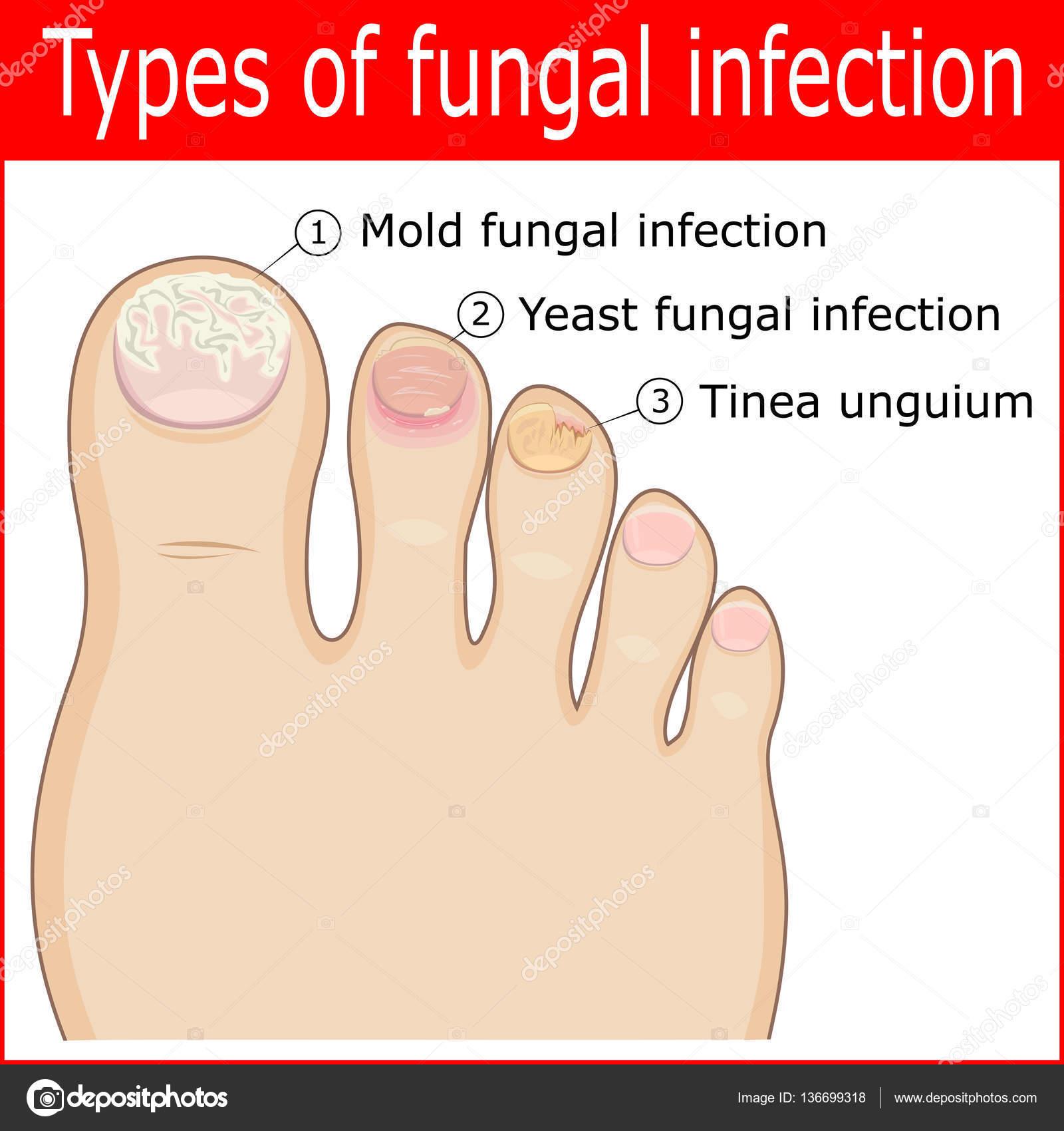
Other possible entry points for bacteria may be animal or insect bites, paper cuts, or puncture wounds.
Herpetic whitlow is the classic exception to this rule, as it is caused by a virus instead of bacteria. Each type of infection has its own specific causes as well.
Felon
A felon infection is usually the result of a puncture wound, such as poking the tip of the finger with a pin.
Staphylococcal and streptococcal organisms are often the source of the infection. The puncture wound allows these bacteria to get into the deeper layers of the skin and multiply, creating the typical symptoms.
Cellulitis
The same bacteria that cause felon infections are also responsible for cellulitis. The bacteria enter the lower layers of the skin through an open wound. The infection may spread to other parts of the hands and fingers via the bloodstream.
Paronychia
This infection is usually caused by the same bacteria that causes felon infections, though, on rare occasions, a fungus can also cause it. It starts when a hangnail or cuticle becomes irritated and leads to an open would that contains bacteria.
It starts when a hangnail or cuticle becomes irritated and leads to an open would that contains bacteria.
The infection may spread to the surrounding area. Picking, biting, or cutting a hangnail may put a person more at risk for developing paronychia.
Herpetic whitlow
Herpes simplex virus I or II is the virus responsible for herpetic whitlow. It is the same virus that causes outbreaks of oral or genital herpes.
People who work with bodily fluids, such as doctors, dentists, and other medical workers, may be more at risk of contracting the infection. It is also possible for someone with herpes to infect their own finger.
Deep space infection
Deep space infections, including infectious flexor tenosynovitis, are usually caused by a deep puncture wound or very deep cut that allows bacteria to reach the deepest tissues in the hand and finger. The structures of the hand are not ready to deal with surface bacteria and provide plenty of potential areas for the bacteria to infect.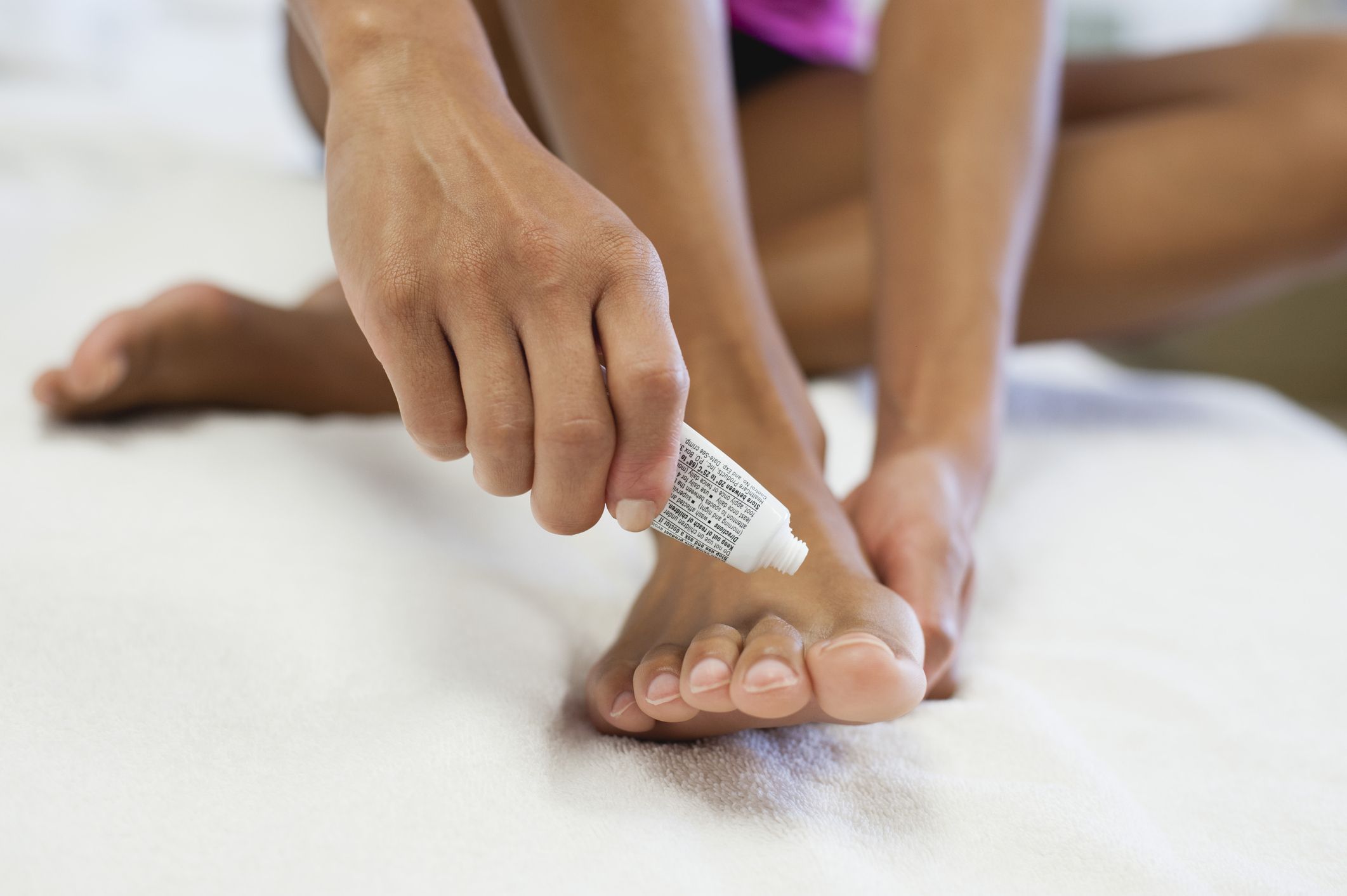
Some people, such as people with compromised immune systems or those with diabetes, may be at an increased risk for infections. Individuals who work in hazardous professions may also be more likely to injure themselves, potentially leading to infection.
Most infections will look pink or red and feel tender to the touch.
When a cut on the finger becomes infected, symptoms include:
- swelling
- redness
- increasing pain in the area
- pus
- feeling unwell
Each finger infection comes with its own symptoms as well:
Felon
Typical symptoms of a felon include a swollen and painful fingertip. It may be possible to see a pool of pus forming under the skin.
Cellulitis
Symptoms of cellulitis include red skin that is sensitive and warm to the touch. The area may also swell.
The motion of the hands should not be affected. If it is, a deep space infection may be present.
Paronychia
Symptoms of paronychia include redness and swelling next to the fingernail, which will be painful to touch.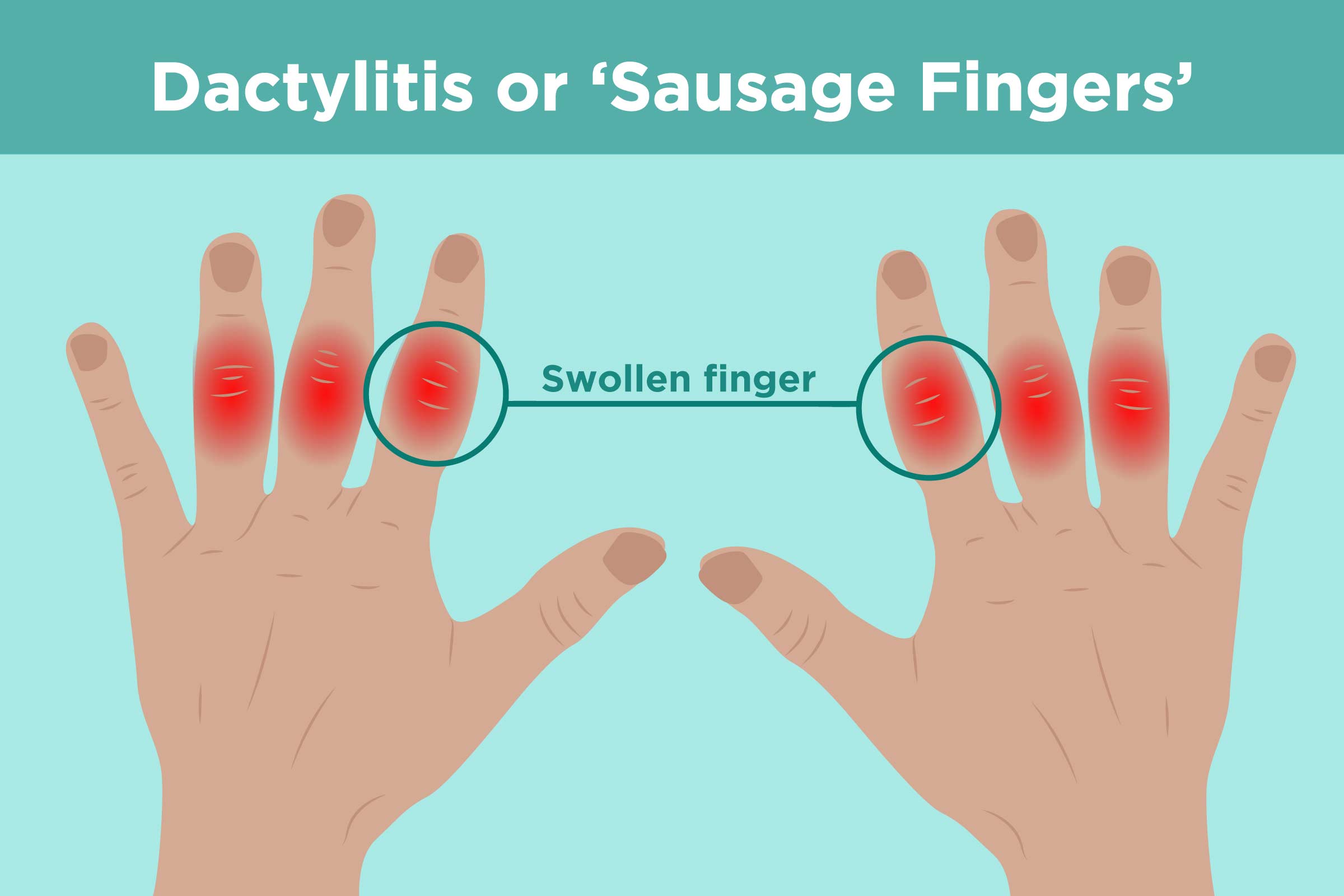
Pus may develop under the nail or skin, which may leak out of the wound. The drainage is usually a white-yellow color.
Herpetic whitlow
Whitlows will look like felons, and may additionally cause a burning or itching sensation in the immediate area. The swelling will likely be milder than in a felon.
It is caused by the herpes simplex virus.
A whitlow may cause one or more open wounds in the area that often occur in clusters.
Deep space infection
Common symptoms and signs of deep space infections include pain when moving certain parts of the hand. The area may become red, very sensitive to touch, and spread along the tendon sheath. The center of the infection may have a soft spot, where a collection of pus is forming.
Infectious flexor tenosynovitis
Infectious flexor tenosynovitis is associated with four major signs, which may not all be present at once:
- the person will first feel pain and tenderness over the tendons in the finger
- the finger will begin to swell
- the person may then feel pain when extending or straightening their finger out
- once the infection has progressed, the finger will be at rest in a slightly flexed or partially bent position
When to see a doctor
It is important to report signs and symptoms of infection to a doctor as soon as possible to avoid serious complications. The doctor will then be able to discuss the best treatment options.
The doctor will then be able to discuss the best treatment options.
Doctors will diagnose finger infections by thoroughly identifying symptoms and their cause. They will usually ask a series of questions to determine when the infection began and if there is something stuck in the wound.
They may ask also ask more specific questions, such as if a person has a history of biting their nails or if they have the herpes virus. These questions help narrow the possibilities down for a proper diagnosis and treatment.
Infections caused by bacteria will usually be treated with antibiotics and medical care.
Doctors may simply cut and drain a wound. Sometimes they may need to perform surgery to be sure all of the infection is cleared out.
Treatment varies from person to person, and people should always discuss options with a doctor.
Home remedies
Finger infections can become serious and may lead to a loss of a finger or part of the hand. So, home care for most finger infections is limited.
However, a minor infection of the hangnail can be managed at home with proper wound care that includes allowing the wound to drain. The infection may respond to warm water soaks and regular washing as well. If symptoms do not resolve, contact a doctor for treatment.
All other types of finger infection require immediate medical care.
Preventing finger infections begins with basic hygiene and following safety practices when handling dangerous materials or doing dangerous work.
Exposure to bodily fluids should be limited, and regular hand washing can help eliminate germs.
The outlook for most infections that are treated properly and caught early enough is good. If treatment is delayed or infections are severe, there is the possibility for lasting damage.
It is essential to talk with a doctor at the first sign of infection to discuss treatment.
Finger infection: Types, symptoms, and treatment
A finger infection is a common problem. The hands are an important way for humans to interact with the world around them.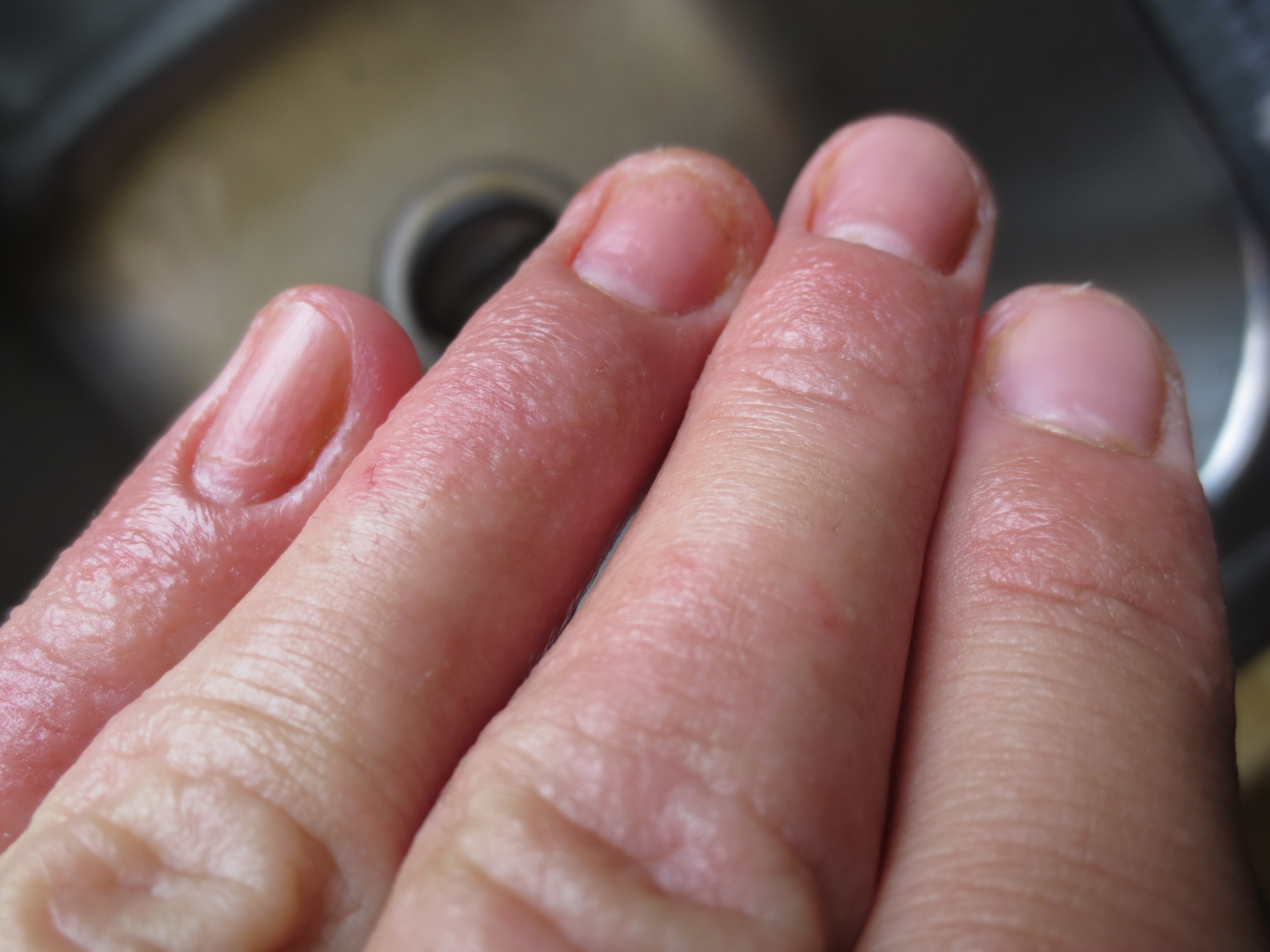
They are more likely to come into contact with infectious bacteria and other germs because of this, which can lead to infection.
A finger infection will usually start out small and grow with time. There are different types of infections, and serious complications can occur if they are left untreated. Prevention is important, as well as knowing when to see a doctor.
There are many different types of infections, each with their own causes and symptoms.
Felon
A felon is an infection at the tip of the finger. The infection takes over the pad of the fingertip and the soft tissue around it.
Cellulitis
Cellulitis is an infection on the surface of the skin. It usually does not involve the deeper levels of tissue on the hand or finger.
Paronychia
Paronychia is an infection of a hangnail on the finger. The tissues on the edges of the finger near the nail root provide the perfect place for bacteria to enter. It is the most common infection of the hand.
It is the most common infection of the hand.
Herpetic whitlow
Herpetic whitlow is an infection caused by a virus. The virus usually infects the fingertip and may be confused for a felon because of this.
It can also have similar symptoms to paronychia, but will not respond to antibiotics.
Deep space infection
Deep space infections are infections that involve one or more structures in the hand and fingers that are below the skin. These may be the blood vessels, tendons, or muscles.
Infectious flexor tenosynovitis
Infectious flexor tenosynovitis is a type of deep space infection that involves the structures in the hand rather than just the skin. This particular type affects the tendons and tendon sheaths responsible for flexing and closing the muscles and bones in the hand.
Share on PinterestA puncture wound on the end of the finger may lead to a felon infection.
Infections around the body are most commonly caused by bacteria that infect the finger due to an injury, such as a cut on the finger.
Other possible entry points for bacteria may be animal or insect bites, paper cuts, or puncture wounds.
Herpetic whitlow is the classic exception to this rule, as it is caused by a virus instead of bacteria. Each type of infection has its own specific causes as well.
Felon
A felon infection is usually the result of a puncture wound, such as poking the tip of the finger with a pin.
Staphylococcal and streptococcal organisms are often the source of the infection. The puncture wound allows these bacteria to get into the deeper layers of the skin and multiply, creating the typical symptoms.
Cellulitis
The same bacteria that cause felon infections are also responsible for cellulitis. The bacteria enter the lower layers of the skin through an open wound. The infection may spread to other parts of the hands and fingers via the bloodstream.
Paronychia
This infection is usually caused by the same bacteria that causes felon infections, though, on rare occasions, a fungus can also cause it.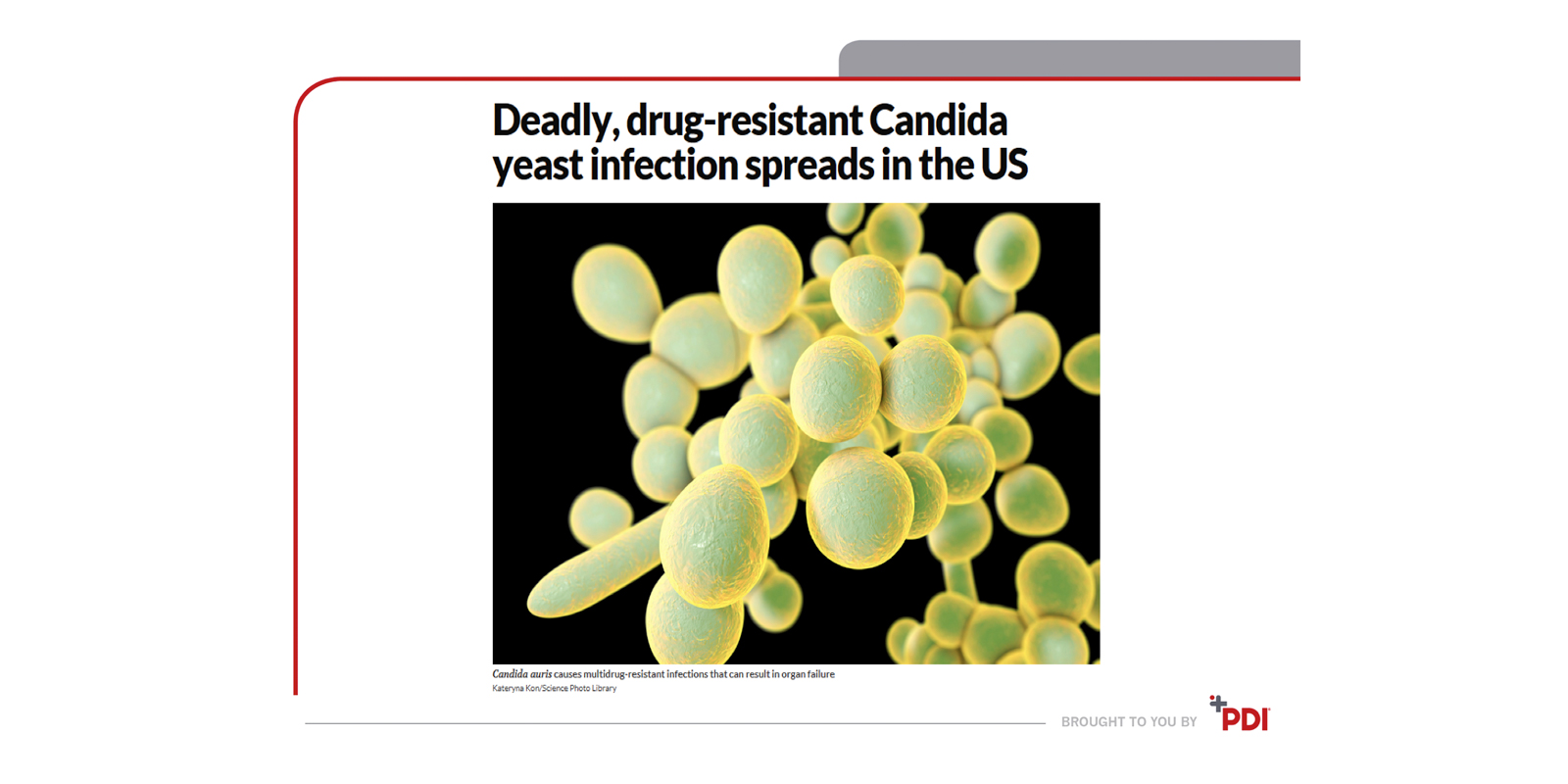 It starts when a hangnail or cuticle becomes irritated and leads to an open would that contains bacteria.
It starts when a hangnail or cuticle becomes irritated and leads to an open would that contains bacteria.
The infection may spread to the surrounding area. Picking, biting, or cutting a hangnail may put a person more at risk for developing paronychia.
Herpetic whitlow
Herpes simplex virus I or II is the virus responsible for herpetic whitlow. It is the same virus that causes outbreaks of oral or genital herpes.
People who work with bodily fluids, such as doctors, dentists, and other medical workers, may be more at risk of contracting the infection. It is also possible for someone with herpes to infect their own finger.
Deep space infection
Deep space infections, including infectious flexor tenosynovitis, are usually caused by a deep puncture wound or very deep cut that allows bacteria to reach the deepest tissues in the hand and finger. The structures of the hand are not ready to deal with surface bacteria and provide plenty of potential areas for the bacteria to infect.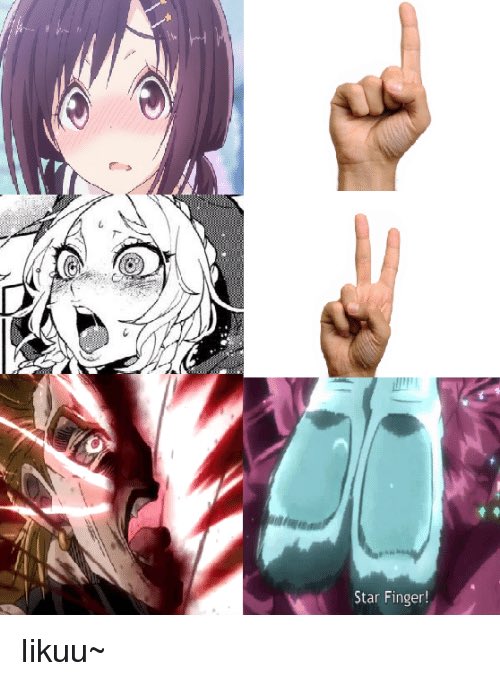
Some people, such as people with compromised immune systems or those with diabetes, may be at an increased risk for infections. Individuals who work in hazardous professions may also be more likely to injure themselves, potentially leading to infection.
Most infections will look pink or red and feel tender to the touch.
When a cut on the finger becomes infected, symptoms include:
- swelling
- redness
- increasing pain in the area
- pus
- feeling unwell
Each finger infection comes with its own symptoms as well:
Felon
Typical symptoms of a felon include a swollen and painful fingertip. It may be possible to see a pool of pus forming under the skin.
Cellulitis
Symptoms of cellulitis include red skin that is sensitive and warm to the touch. The area may also swell.
The motion of the hands should not be affected. If it is, a deep space infection may be present.
Paronychia
Symptoms of paronychia include redness and swelling next to the fingernail, which will be painful to touch.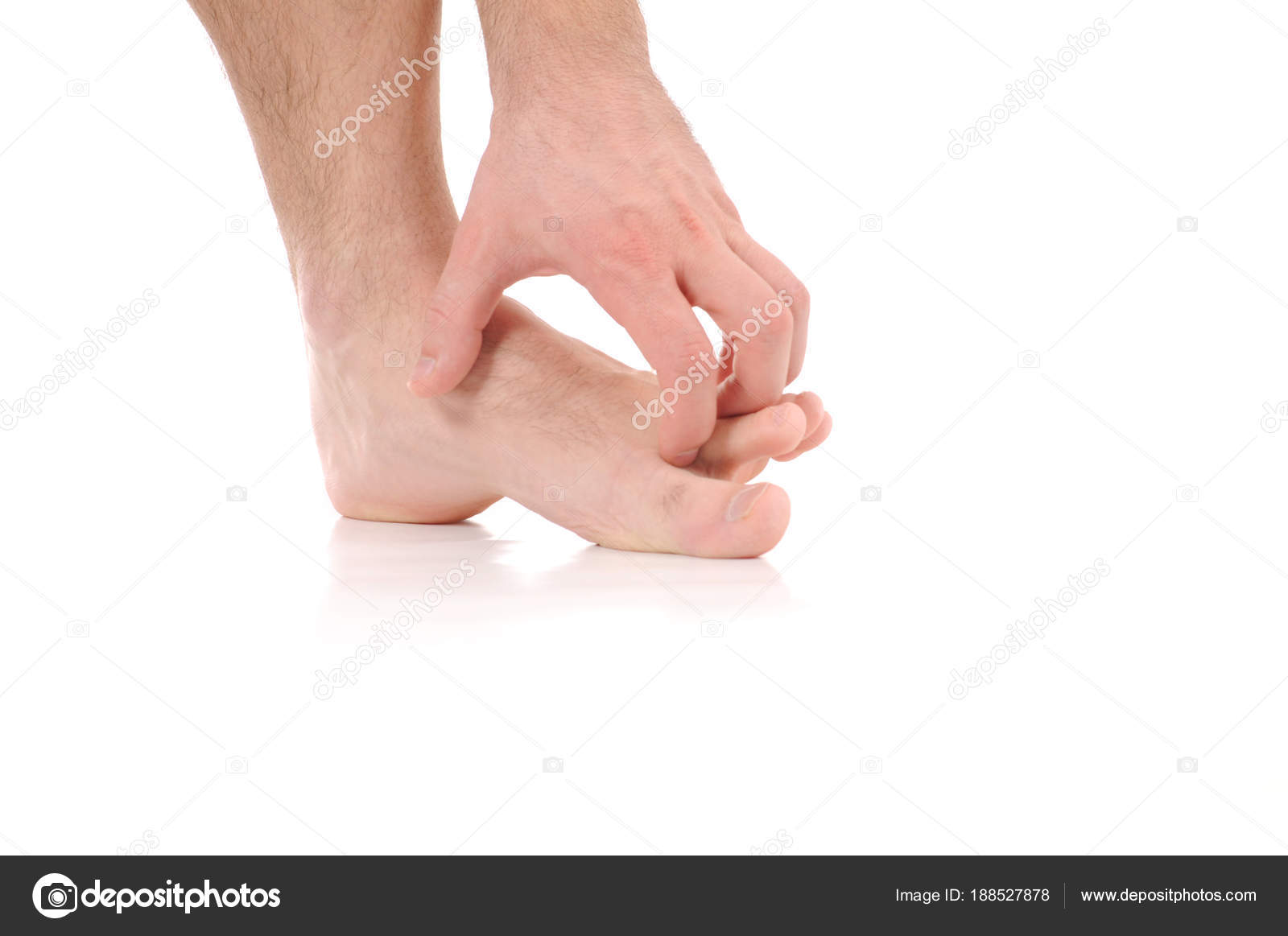
Pus may develop under the nail or skin, which may leak out of the wound. The drainage is usually a white-yellow color.
Herpetic whitlow
Whitlows will look like felons, and may additionally cause a burning or itching sensation in the immediate area. The swelling will likely be milder than in a felon.
It is caused by the herpes simplex virus.
A whitlow may cause one or more open wounds in the area that often occur in clusters.
Deep space infection
Common symptoms and signs of deep space infections include pain when moving certain parts of the hand. The area may become red, very sensitive to touch, and spread along the tendon sheath. The center of the infection may have a soft spot, where a collection of pus is forming.
Infectious flexor tenosynovitis
Infectious flexor tenosynovitis is associated with four major signs, which may not all be present at once:
- the person will first feel pain and tenderness over the tendons in the finger
- the finger will begin to swell
- the person may then feel pain when extending or straightening their finger out
- once the infection has progressed, the finger will be at rest in a slightly flexed or partially bent position
When to see a doctor
It is important to report signs and symptoms of infection to a doctor as soon as possible to avoid serious complications.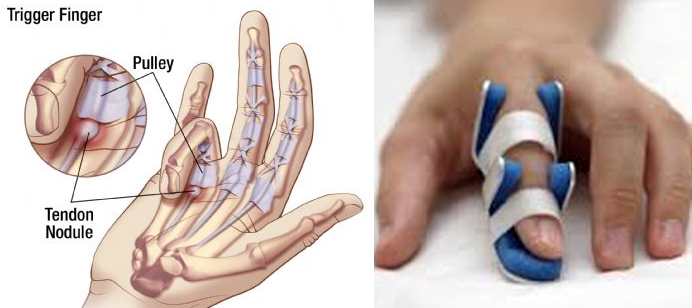 The doctor will then be able to discuss the best treatment options.
The doctor will then be able to discuss the best treatment options.
Doctors will diagnose finger infections by thoroughly identifying symptoms and their cause. They will usually ask a series of questions to determine when the infection began and if there is something stuck in the wound.
They may ask also ask more specific questions, such as if a person has a history of biting their nails or if they have the herpes virus. These questions help narrow the possibilities down for a proper diagnosis and treatment.
Infections caused by bacteria will usually be treated with antibiotics and medical care.
Doctors may simply cut and drain a wound. Sometimes they may need to perform surgery to be sure all of the infection is cleared out.
Treatment varies from person to person, and people should always discuss options with a doctor.
Home remedies
Finger infections can become serious and may lead to a loss of a finger or part of the hand. So, home care for most finger infections is limited.
However, a minor infection of the hangnail can be managed at home with proper wound care that includes allowing the wound to drain. The infection may respond to warm water soaks and regular washing as well. If symptoms do not resolve, contact a doctor for treatment.
All other types of finger infection require immediate medical care.
Preventing finger infections begins with basic hygiene and following safety practices when handling dangerous materials or doing dangerous work.
Exposure to bodily fluids should be limited, and regular hand washing can help eliminate germs.
The outlook for most infections that are treated properly and caught early enough is good. If treatment is delayed or infections are severe, there is the possibility for lasting damage.
It is essential to talk with a doctor at the first sign of infection to discuss treatment.
Finger infection: Types, symptoms, and treatment
A finger infection is a common problem. The hands are an important way for humans to interact with the world around them.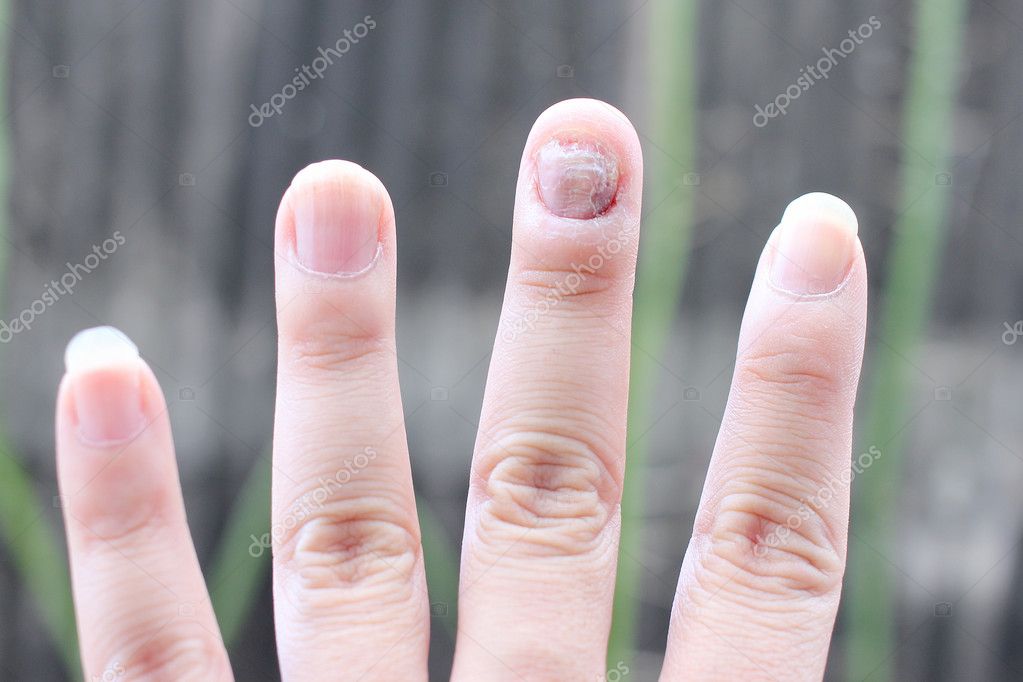
They are more likely to come into contact with infectious bacteria and other germs because of this, which can lead to infection.
A finger infection will usually start out small and grow with time. There are different types of infections, and serious complications can occur if they are left untreated. Prevention is important, as well as knowing when to see a doctor.
There are many different types of infections, each with their own causes and symptoms.
Felon
A felon is an infection at the tip of the finger. The infection takes over the pad of the fingertip and the soft tissue around it.
Cellulitis
Cellulitis is an infection on the surface of the skin. It usually does not involve the deeper levels of tissue on the hand or finger.
Paronychia
Paronychia is an infection of a hangnail on the finger. The tissues on the edges of the finger near the nail root provide the perfect place for bacteria to enter.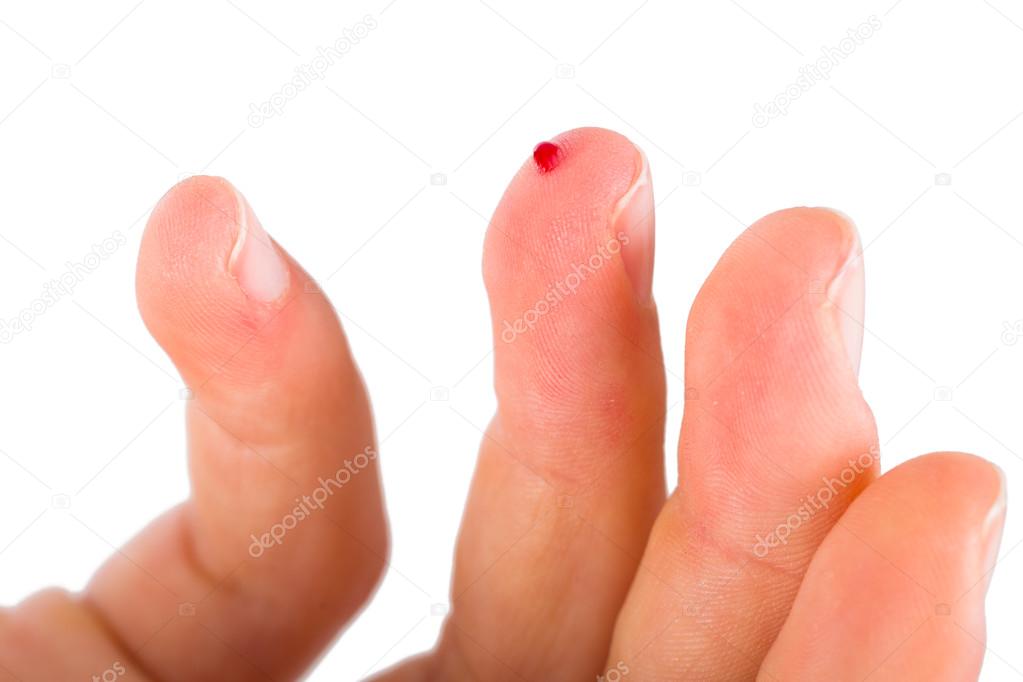 It is the most common infection of the hand.
It is the most common infection of the hand.
Herpetic whitlow
Herpetic whitlow is an infection caused by a virus. The virus usually infects the fingertip and may be confused for a felon because of this.
It can also have similar symptoms to paronychia, but will not respond to antibiotics.
Deep space infection
Deep space infections are infections that involve one or more structures in the hand and fingers that are below the skin. These may be the blood vessels, tendons, or muscles.
Infectious flexor tenosynovitis
Infectious flexor tenosynovitis is a type of deep space infection that involves the structures in the hand rather than just the skin. This particular type affects the tendons and tendon sheaths responsible for flexing and closing the muscles and bones in the hand.
Share on PinterestA puncture wound on the end of the finger may lead to a felon infection.
Infections around the body are most commonly caused by bacteria that infect the finger due to an injury, such as a cut on the finger.
Other possible entry points for bacteria may be animal or insect bites, paper cuts, or puncture wounds.
Herpetic whitlow is the classic exception to this rule, as it is caused by a virus instead of bacteria. Each type of infection has its own specific causes as well.
Felon
A felon infection is usually the result of a puncture wound, such as poking the tip of the finger with a pin.
Staphylococcal and streptococcal organisms are often the source of the infection. The puncture wound allows these bacteria to get into the deeper layers of the skin and multiply, creating the typical symptoms.
Cellulitis
The same bacteria that cause felon infections are also responsible for cellulitis. The bacteria enter the lower layers of the skin through an open wound. The infection may spread to other parts of the hands and fingers via the bloodstream.
Paronychia
This infection is usually caused by the same bacteria that causes felon infections, though, on rare occasions, a fungus can also cause it. It starts when a hangnail or cuticle becomes irritated and leads to an open would that contains bacteria.
It starts when a hangnail or cuticle becomes irritated and leads to an open would that contains bacteria.
The infection may spread to the surrounding area. Picking, biting, or cutting a hangnail may put a person more at risk for developing paronychia.
Herpetic whitlow
Herpes simplex virus I or II is the virus responsible for herpetic whitlow. It is the same virus that causes outbreaks of oral or genital herpes.
People who work with bodily fluids, such as doctors, dentists, and other medical workers, may be more at risk of contracting the infection. It is also possible for someone with herpes to infect their own finger.
Deep space infection
Deep space infections, including infectious flexor tenosynovitis, are usually caused by a deep puncture wound or very deep cut that allows bacteria to reach the deepest tissues in the hand and finger. The structures of the hand are not ready to deal with surface bacteria and provide plenty of potential areas for the bacteria to infect.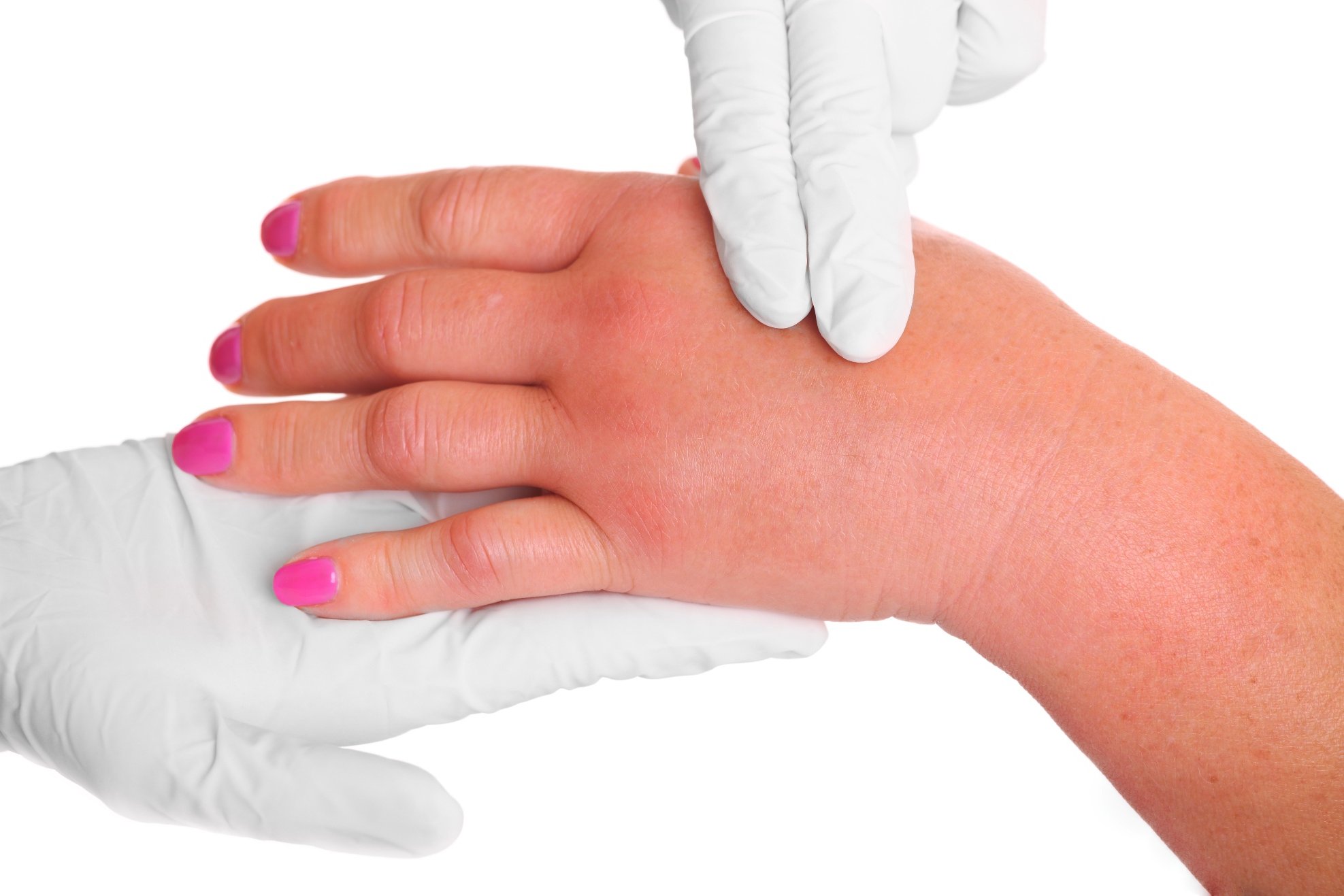
Some people, such as people with compromised immune systems or those with diabetes, may be at an increased risk for infections. Individuals who work in hazardous professions may also be more likely to injure themselves, potentially leading to infection.
Most infections will look pink or red and feel tender to the touch.
When a cut on the finger becomes infected, symptoms include:
- swelling
- redness
- increasing pain in the area
- pus
- feeling unwell
Each finger infection comes with its own symptoms as well:
Felon
Typical symptoms of a felon include a swollen and painful fingertip. It may be possible to see a pool of pus forming under the skin.
Cellulitis
Symptoms of cellulitis include red skin that is sensitive and warm to the touch. The area may also swell.
The motion of the hands should not be affected. If it is, a deep space infection may be present.
Paronychia
Symptoms of paronychia include redness and swelling next to the fingernail, which will be painful to touch.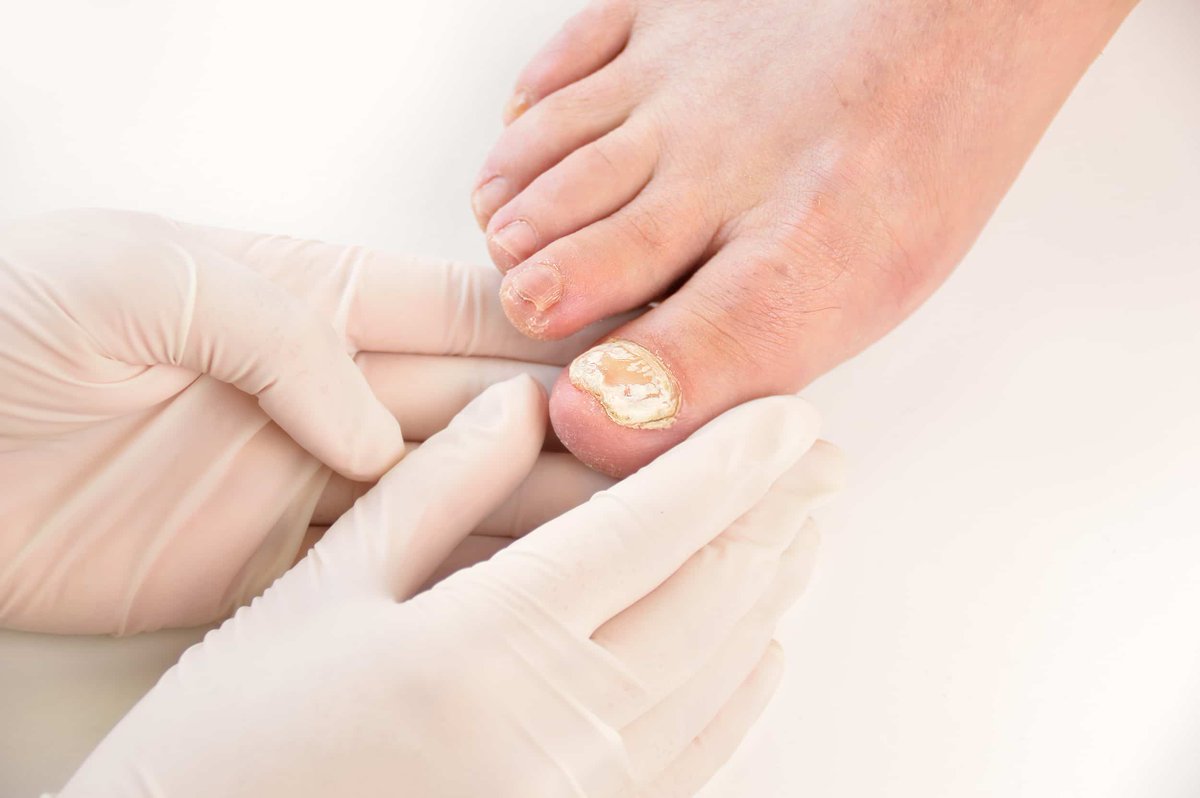
Pus may develop under the nail or skin, which may leak out of the wound. The drainage is usually a white-yellow color.
Herpetic whitlow
Whitlows will look like felons, and may additionally cause a burning or itching sensation in the immediate area. The swelling will likely be milder than in a felon.
It is caused by the herpes simplex virus.
A whitlow may cause one or more open wounds in the area that often occur in clusters.
Deep space infection
Common symptoms and signs of deep space infections include pain when moving certain parts of the hand. The area may become red, very sensitive to touch, and spread along the tendon sheath. The center of the infection may have a soft spot, where a collection of pus is forming.
Infectious flexor tenosynovitis
Infectious flexor tenosynovitis is associated with four major signs, which may not all be present at once:
- the person will first feel pain and tenderness over the tendons in the finger
- the finger will begin to swell
- the person may then feel pain when extending or straightening their finger out
- once the infection has progressed, the finger will be at rest in a slightly flexed or partially bent position
When to see a doctor
It is important to report signs and symptoms of infection to a doctor as soon as possible to avoid serious complications. The doctor will then be able to discuss the best treatment options.
The doctor will then be able to discuss the best treatment options.
Doctors will diagnose finger infections by thoroughly identifying symptoms and their cause. They will usually ask a series of questions to determine when the infection began and if there is something stuck in the wound.
They may ask also ask more specific questions, such as if a person has a history of biting their nails or if they have the herpes virus. These questions help narrow the possibilities down for a proper diagnosis and treatment.
Infections caused by bacteria will usually be treated with antibiotics and medical care.
Doctors may simply cut and drain a wound. Sometimes they may need to perform surgery to be sure all of the infection is cleared out.
Treatment varies from person to person, and people should always discuss options with a doctor.
Home remedies
Finger infections can become serious and may lead to a loss of a finger or part of the hand. So, home care for most finger infections is limited.
However, a minor infection of the hangnail can be managed at home with proper wound care that includes allowing the wound to drain. The infection may respond to warm water soaks and regular washing as well. If symptoms do not resolve, contact a doctor for treatment.
All other types of finger infection require immediate medical care.
Preventing finger infections begins with basic hygiene and following safety practices when handling dangerous materials or doing dangerous work.
Exposure to bodily fluids should be limited, and regular hand washing can help eliminate germs.
The outlook for most infections that are treated properly and caught early enough is good. If treatment is delayed or infections are severe, there is the possibility for lasting damage.
It is essential to talk with a doctor at the first sign of infection to discuss treatment.
Hand Infection: Types and Treatment
Hand infections are common. They can affect patients of all ages.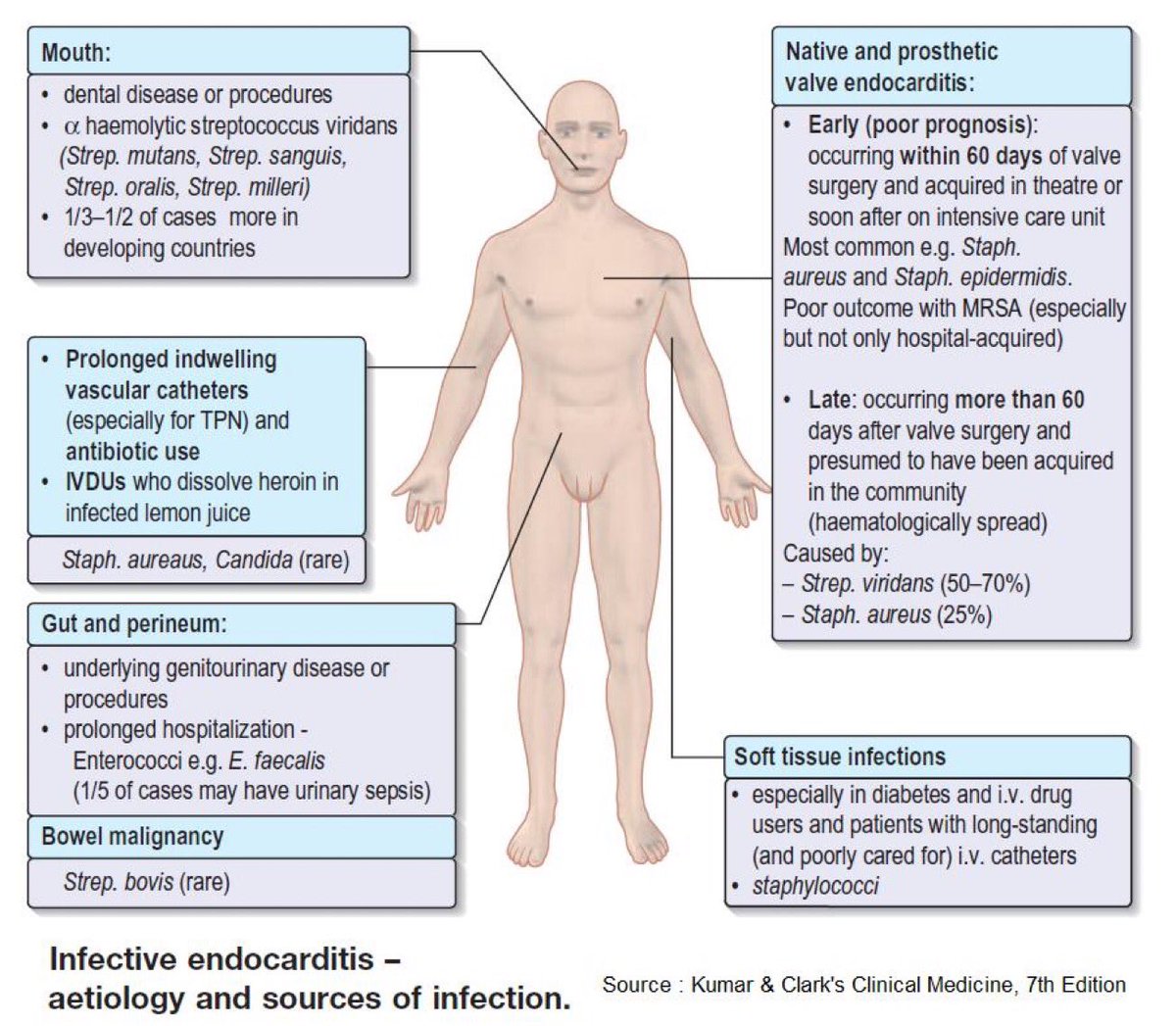 There are multiple types and causes of infections. Therefore, the treatment of these infections varies. It is important to recognize that long-term complications from hand infections can occur. The unfortunate ongoing problems may occur even with proper and rapid treatment.
There are multiple types and causes of infections. Therefore, the treatment of these infections varies. It is important to recognize that long-term complications from hand infections can occur. The unfortunate ongoing problems may occur even with proper and rapid treatment.
Below are some specific types and causes of infections in the hand and fingers:
Bite Wound Infection
In a bite, bacteria from the patient’s own skin can be driven deep by the tooth puncture. Other bacteria that cause infection come directly from the mouth/teeth of the “biter.” Both human and animal bites are common. Thorough washing, soaking, and often surgical drainage of the bite wound is needed to clear the infection. The smaller the puncture wound (cat bite), the higher the infection risk as only the surface of the skin can be cleansed. Small wounds often need to be each squeezed to express fluid or enlarged to better clean them. A larger open wound is often easier to wash out and, depending on location, degree of contamination, and what deep tissues are exposed, the wound may be closed with stitches or left open. Other wound treatments may include gauze packing into the wound. If the wound is left open, sometimes it can be closed later, or the wound is left to heal on its own. This called healing by secondary intention. Antibiotics are also commonly used during treatment. Sometimes pills are used, and sometimes IV antibiotics are needed for more severe infections and ones that involve bone or joints.
Other wound treatments may include gauze packing into the wound. If the wound is left open, sometimes it can be closed later, or the wound is left to heal on its own. This called healing by secondary intention. Antibiotics are also commonly used during treatment. Sometimes pills are used, and sometimes IV antibiotics are needed for more severe infections and ones that involve bone or joints.
When someone punches another person in the mouth, a “fight bite” may occur. This is when the tooth of the other person penetrates the skin of the puncher over the knuckle. “Fight bites” to the hand and can cause particular problems when bacteria or foreign material (such as teeth) can become trapped in the knuckle (finger joints). These joint injuries often require urgent surgical exploration to enlarge the wound to effectively wash it out and determine if the tooth penetrated into the joint. Cartilage cannot heal once injured. Immediate treatment and starting antibiotics often protects the cartilage even if an infection may not yet be present.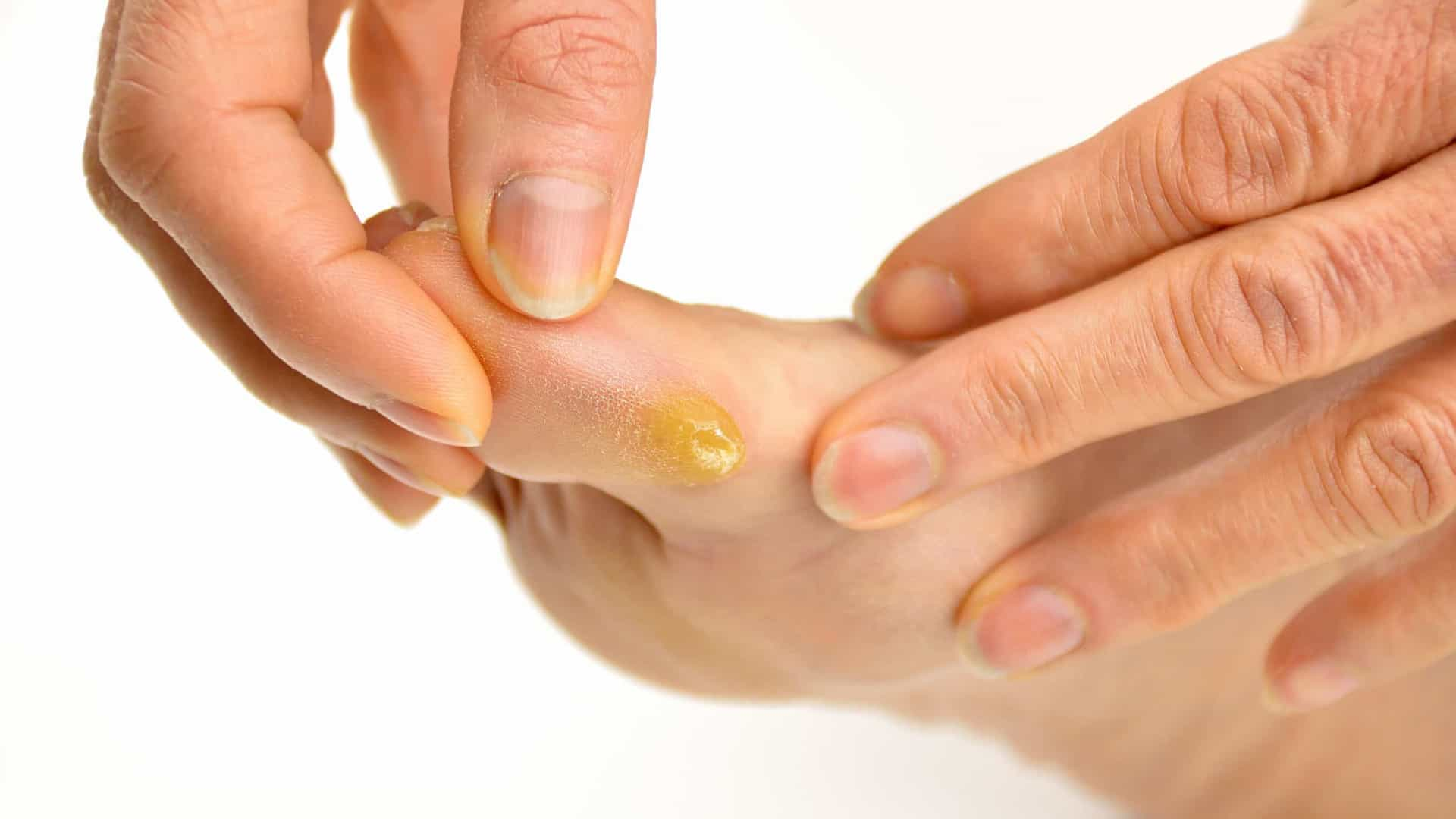 This is called prophylactic treatment. This means the surgery is being performed to try to prevent an infection from developing or becoming severe if it is mild. Thus, how quickly you seek treatment is important. If you wait several days after the injury to seek treamtnet, the infection is often established and severe, compared to seeking medical care within the first few hours.
This is called prophylactic treatment. This means the surgery is being performed to try to prevent an infection from developing or becoming severe if it is mild. Thus, how quickly you seek treatment is important. If you wait several days after the injury to seek treamtnet, the infection is often established and severe, compared to seeking medical care within the first few hours.
After animal bite wounds, rabies must also be considered. Treatment and evaluation should be initiated as soon as possible. It often requires rabies immunoglobulin being injected both into the wound area and a remote muscle. Several injection treatments are needed. This is particularly important with wild animal bites or dogs with unknown vaccination status.
Cellulitis
Cellulitis is a skin infection that can cause skin redness, warmth, and pain. Patients with cellulitis may have a fever, chills, or feel sick. Cellulitis usually happens around a break or cut in the skin. The infection can spread rapidly throughout the limb or into the bloodstream, and therefore prompt treatment is important. The treatment for this type of infection includes antibiotics and possible surgical drainage if there is abscess below the skin. Because the skin is easily visible, many infections will result in skin redness. It is important for your doctor to determine if the infection is restricted to the skin (cellulitis), or if there a deeper infection with the skin being “the tip of the iceberg.” Deep infections include fasciitis, tenosynovitis, myositis, osteomyelitis (bone), septic joint, or an abscess.
The treatment for this type of infection includes antibiotics and possible surgical drainage if there is abscess below the skin. Because the skin is easily visible, many infections will result in skin redness. It is important for your doctor to determine if the infection is restricted to the skin (cellulitis), or if there a deeper infection with the skin being “the tip of the iceberg.” Deep infections include fasciitis, tenosynovitis, myositis, osteomyelitis (bone), septic joint, or an abscess.
Deep Space Infections
The hand is divided into many separate “compartments” or “deep spaces.” One or more of these can become infected even from a small puncture wound. An abscess can form in the muscle area at the base of the thumb (thenar space), the palm (deep palmar space), or the web spaces between the fingers. These infections can spread to other areas, even to the wrist and forearm. Urgent evaluation will include an exam by a physician and sometimes imaging and tests to determine the location of infection. Treatment will involve a combination of antibiotics, surgical drainage, and wound care.
Treatment will involve a combination of antibiotics, surgical drainage, and wound care.
Felon
A painful, throbbing infection of the pulp of the fingertip is called a “felon” (see Figure 1). This closed space is separated into many small compartments, each of which fills with infection and pus. A felon can occur after gardening, nail cutting, or other activities that involve sharp objects near the fingertip. Diabetics are often at high risk due to multiple finger sticks to check their blood sugar. Some felons will heal with soaks and oral antibiotics, but others may also need to be drained. If not treated early, destruction of the soft tissues and even bone can occur, leading to complications such as poor wound healing, stiffness, and pain.
Paronychia
A paronychia is an infection of the special nail fold skin, which is the area around the fingernail (see Figure 2). Paronychia can occur at various times to cause an infection. In acute paronychia, bacteria causes the skin around the nail to be red, swollen, and tender.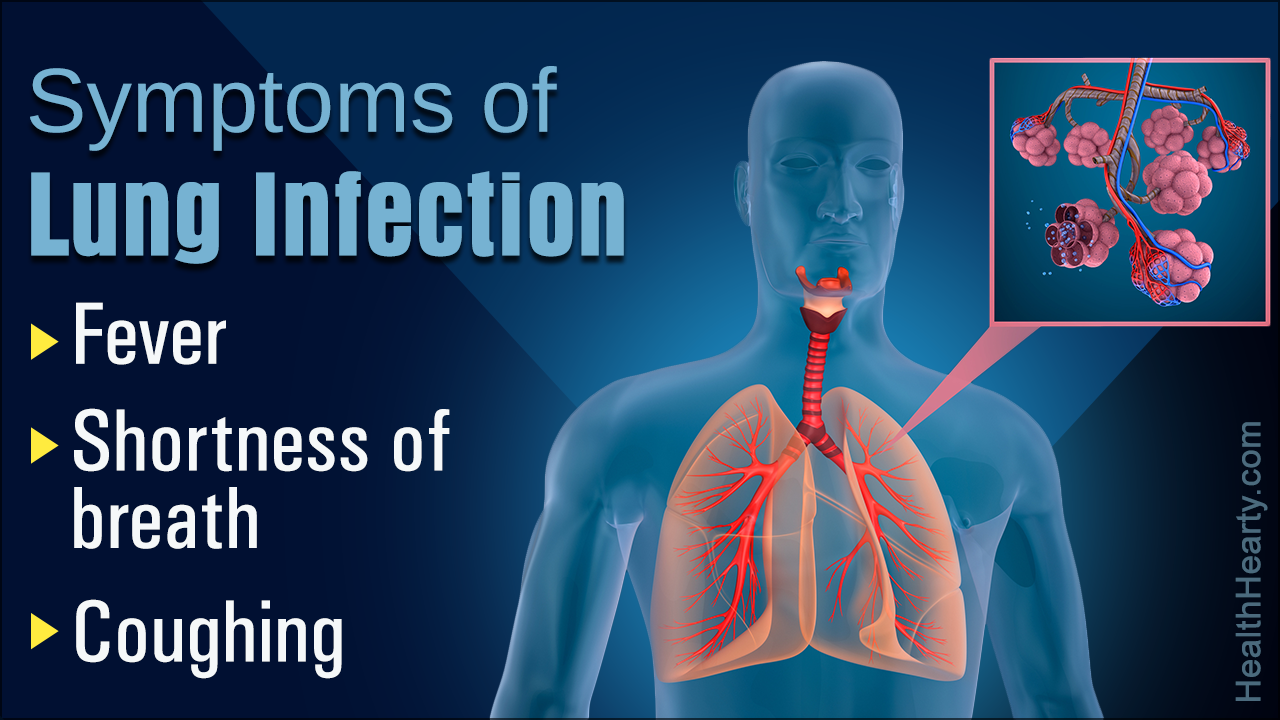 If the infection is treated early enough, soaks and oral antibiotics may cure the infection. If pus has formed under the skin, surgical drainage is needed to drain the pus. Sometimes part or all of the nail requires removal. Chronic paronychia can be caused by fungus, and this usually occurs in people whose hands are frequently wet (such as dishwashers) or whose immune systems are not working well. The cuticle area becomes mildly red and swollen, without drainage and only mild tenderness. This may be treated with special medication and trying to keep the area dry. Constant exposure to moisture can promote the fungal infection. Topical medications such as gentian blue can be used. Surgery sometimes is needed to remove infected tissue.
If the infection is treated early enough, soaks and oral antibiotics may cure the infection. If pus has formed under the skin, surgical drainage is needed to drain the pus. Sometimes part or all of the nail requires removal. Chronic paronychia can be caused by fungus, and this usually occurs in people whose hands are frequently wet (such as dishwashers) or whose immune systems are not working well. The cuticle area becomes mildly red and swollen, without drainage and only mild tenderness. This may be treated with special medication and trying to keep the area dry. Constant exposure to moisture can promote the fungal infection. Topical medications such as gentian blue can be used. Surgery sometimes is needed to remove infected tissue.
Herpetic Whitlow
Herpetic whitlow is a viral infection of the hand, usually on the fingers, caused by a herpes virus. This is more commonly seen in healthcare workers whose hands are exposed to the saliva of patients carrying herpes. The condition, characterized by small, swollen, painful, blood-tinged blisters, usually heals in several weeks without many long-term effects. Sometimes treatment includes the use of an antiviral medication.
The condition, characterized by small, swollen, painful, blood-tinged blisters, usually heals in several weeks without many long-term effects. Sometimes treatment includes the use of an antiviral medication.
MRSA
MRSA, or Methicillin Resistant Staphylococcus Aureus, is a type of bacteria that is resistant to certain antibiotics. In the past, MRSA was seen in those in a hospital setting and was less common. Over time, this type of infection has become more common in hospitals and in the community. Skin infections usually look like boils or collections of pus. Treatment with antibiotics and the need for surgery typically depends on the location and severity of this infection. It is important that skin MRSA is treated right away to prevent it from causing more serious infections and spreading to others. If this bacteria is identified, it is important to avoid touching other people. Healthcare workers should wear a gown and gloves to prevent transmission to themselves or others.
Necrotizing Fasciitis, or “Flesh-Eating Bacteria”
Necrotizing fasciitis is a very rare but severe infection. The fascia is a deep connective tissue that covers muscle and is below the fat layer. Because it is a deep infection below the skin level, it can spread rapidly without much skin redness until very late. It often results in severe pain and swelling out of proportion to the skin appearance. There may be some skin blisters. Patients are often very ill. Streptococcus pyogenes or other “flesh-eating bacteria” enter the body through a cut. These bacteria produce toxins that destroy skin, muscles, and other soft tissue and result in low blood pressure, high heart rate, and problems with bleeding, the liver, and kidneys. Necrotizing fasciitis is a true emergency — it can be life threatening — and very powerful. Often, multiple IV antibiotics are given as soon as possible. Urgent surgery is usually needed to remove dead tissue and fascia to stop the spread of the infection, similar to cutting down live trees ahead of a spreading fire to stop the fire spread. These infections have a high chance of amputation and death. Although they are rare, it is very important to recognize quickly for the best outcome. Certain factors may increase the chance of developing this infection, including diabetes, IV drug abuse, or patients with a poor immune system.
These infections have a high chance of amputation and death. Although they are rare, it is very important to recognize quickly for the best outcome. Certain factors may increase the chance of developing this infection, including diabetes, IV drug abuse, or patients with a poor immune system.
Mycobacterial Infections
Less common infections may be caused by mycobacterium, a specific category of infectious organism. These organisms are very slow growing and hard to identify in the laboratory. One of these types, Mycobacterium marinum infection, can develop after a puncture wound from fish spines or contamination of a simple wound from contaminated water (water from nature or from aquariums). These atypical infections develop gradually and may be associated with swelling and stiffness without much pain or redness. Surgical removal of infected tissue may be necessary and is helpful to determine which medicine will help treat the infection. It may take 6 weeks to identify the origin in laboratory culture.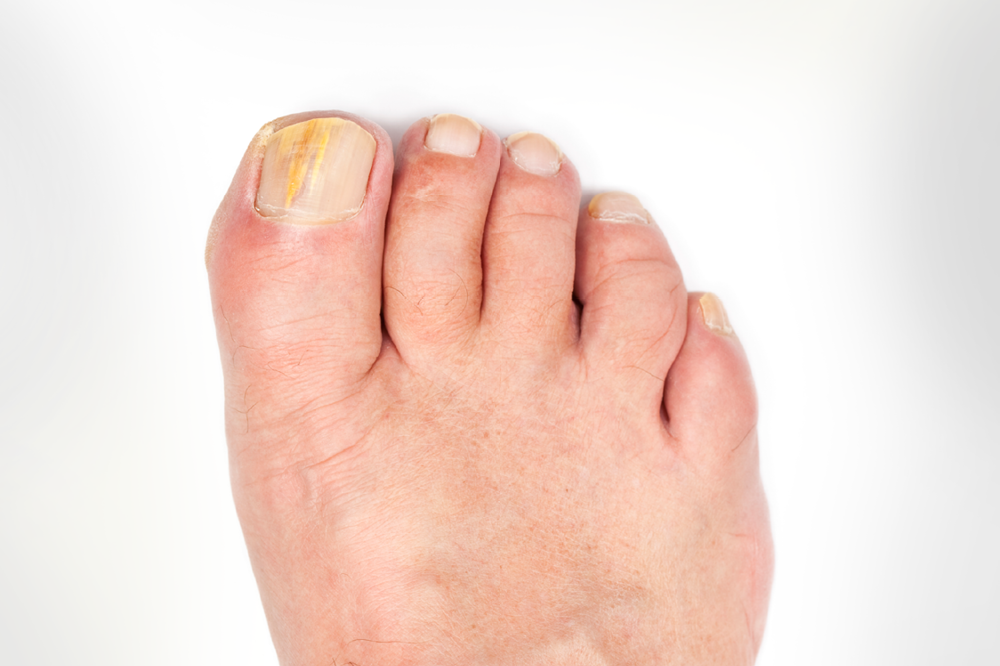 Often the medical treatment lasts several months. Patients whose immune systems are not working well (for example, those undergoing chemotherapy or who have HIV) are more susceptible to atypical mycobacterial infections.
Often the medical treatment lasts several months. Patients whose immune systems are not working well (for example, those undergoing chemotherapy or who have HIV) are more susceptible to atypical mycobacterial infections.
Septic Arthritis/Osteomyelitis
A wound in or near a joint can cause septic arthritis, which is a severe infection inside the joint. Wounds of various types and sizes, including puncture wounds, can cause this type of infection. This type and location for infection can cause a problem quickly. Therefore, urgent surgical drainage and antibiotics are needed. If this treatment is delayed, infection of the bone (osteomyelitis) or rapid destruction of the cartilage can occur. Septic arthritis with or without osteomyelitis can require one or more surgeries and long-term treatment with antibiotics. Because cartilage cannot heal, once it is damaged by the bacteria and the white blood cells release toxic chemical to fight the infection, it may leave the person with a painful, swollen, stiff joint even after the infection is cured. If this happens in a young active person there may be few treatment options. Some small, chronically painful joints may be surgically fused to obtain pain relief.
If this happens in a young active person there may be few treatment options. Some small, chronically painful joints may be surgically fused to obtain pain relief.
Tendon Sheath Infection (“Infectious Flexor Tenosynovitis”)
Tendons that bend the fingers run from wrist through the palm and to the fingertips. At the base of the finger the flexor tendons enter a pulley system or sheath. If a small cut or puncture wound occurs in a finger, especially near a joint on the palm side, the canal that the flexor tendon runs through can get infected. Prompt treatment is recommended, as this infection can cause severe stiffness or even destroy and injure the tendon. The tendon may rupture or become adherent to the bone or sheath, limiting or eliminating its movement. A finger with a tendon sheath infection is swollen, red, and tender over the palm side of the finger, the finger often is slightly bent to relieve pressure and pain, and it is very painful to straighten (see Figure 3). This infection usually requires that the patient be admitted to the hospital for IV antibiotics, and surgical drainage is often a part of the treatment.
This infection usually requires that the patient be admitted to the hospital for IV antibiotics, and surgical drainage is often a part of the treatment.
Infected Finger | EmergeOrtho
An infected finger can happen to anyone at any time. Something as seemingly simple as a cut or nip from your pet cat is subjected to infection, especially if not treated quickly or properly. Once infection sets in, the potential for serious problems increases exponentially. To avoid the loss of nerve tissue and/or bone, it is crucial to seek treatment from an experienced physician.
At EmergeOrtho, our highly-skilled physicians understand that even a small injury can lead to a serious infection. For this exact reason, our fellowship-trained EmergeOrtho Hand and Wrist Team provides innovative and superior quality service for patients across North Carolina. Our priority centers on helping all of our patients to Emerge Stronger. Healthier. Better.
How Can I Tell if I Have an Infected Finger?
Infections in the finger occur as the result of bacteria, viruses, and parasites entering the body through a wound. No matter the size —a small cut or large gash—any break in the skin is an invitation for infection. Once the infection enters the body it destroys healthy tissues and begins to spread through your blood. It can even creep into your joints (septic arthritis) and bones (osteomyelitis).
No matter the size —a small cut or large gash—any break in the skin is an invitation for infection. Once the infection enters the body it destroys healthy tissues and begins to spread through your blood. It can even creep into your joints (septic arthritis) and bones (osteomyelitis).
Left untreated severe medical problems can not only lead to loss of nerve tissue and bone but may also develop into a life-threatening situation. Symptoms of finger infections include:
- Redness
- Swelling
- Warmth
- Pus drainage
- Fever (in some cases)
Causes and Types of Finger and Hand Infections
Perhaps not widely known, there are multiple common causes of finger and hand infections, which include (but are not limited to):
- Tendon sheath infection
When a puncture wound in the finger produces an infection in the flexor tendons around the wrist, it can affect your ability to bend your fingers. As a result, the fingers and hand are stiff, swollen, red and tender. This infection often requires treatment with IV antibiotics.
This infection often requires treatment with IV antibiotics. - Deep puncture wounds
Cat, dog, and other animal bites serve as recognizable and frequent examples of deep puncture wounds. Cat-bite wounds, in particular, are cause for concern due to a cat’s fangs being able to penetrate deeply into the joints and tissue. The result: A perfect breeding ground for infection. If you have been bitten by an animal—regardless of whether it is feral or domesticated, you should be checked for rabies immediately. - Cellulitis
This bacterial infection results from a break or crack in the skin around the fingernails. It can quickly spread to the bloodstream and must be addressed quickly with antibiotic treatment to avoid serious repercussions. Some patients may need hospitalization to fight the disease. - Chronic paronychia
Paronychia is a term used when cellulitis has progressed beyond 10 to 12 weeks. Chronic paronychia describes the slow onset of the infection and acute paronychia is the term for the sudden onset of infection. Topical steroids may be used to treat the infection.
Topical steroids may be used to treat the infection. - Deep space infection
When one of the compartments within the hand is infected and an abscess forms, the condition is referred to as a deep space infection. These infections often manifest in the space between the fingers or the muscle at the base of the thumb and palm. - MRSA
Methicillin-Resistant Staphylococcus Aureus or MRSA is a bacterial infection contracted primarily from large, community places like hospitals, gyms, dorms, and even daycares. MRSA must be treated as soon as possible to prevent it from transforming into a more serious infection. - Fungal infections
More common in those whose hands are frequently wet — like dishwashers, fungal bacterial infections affect the area around the fingernail. Signs include red, swollen, and tender cuticles. While this infection can be treated with medication, surgery may be needed to completely drain the pus. - Septic arthritis
This type of infection occurs when a wound near a joint becomes infected, usually, from a penetrating injury such as a bite, small needle, or injection. Urgent surgical attention is needed because the joint cartilage can be destroyed in just a few days. If not caught early, septic arthritis may require weeks of antibiotic treatment and several surgeries.
Urgent surgical attention is needed because the joint cartilage can be destroyed in just a few days. If not caught early, septic arthritis may require weeks of antibiotic treatment and several surgeries. - Herpes virus
Although most people may not associate the herpes virus with the hands, it can cause an infection resulting in small, painful, and blood-tinged blisters. This condition usually resolves in a few weeks with basic treatment. - Gardening or activities that involve sharp objects
A mishap with a gardening tool or other sharp object can cause the pulp of the fingertip to become infected, forming something called a felon. This causes painful throbbing and may need to be drained. In more serious cases, soft tissue and bone may be destroyed.
Infected Finger Treatment
While some infections can be managed with antibiotics or topical steroids, others may require surgery or even extensive hospitalization. If you believe you may have an infection of the skin in or around your finger, consult your doctor as soon as possible.
At EmergeOrtho, all of our physicians have broad, extensive clinical experience and training. Our renowned expertise throughout North Carolina for providing sophisticated, patient-centered care makes our practice the clear choice for local orthopedic care.
To receive treatment for an infected finger, request a visit now.
Preventing and Treating Fingernail Infections
Proper nail care is the best way to prevent paronychia.
You depend on your hands for just about everything, meaning you should be sure to keep them in tip-top shape. One way to do that is to prevent paronychia, and if you can’t prevent it, treat it quickly. Don’t worry, paronychia sounds a lot scarier than it actually is: a skin infection around the fingernail. The cuticle or side of the nail will usually be red and swollen, and may be tender or warm to the touch. Less commonly, the shape or color of the nail may be affected as well.
What causes it?
According to Medline Plus, paronychia is an infected wound typically caused by an injury to the area. This can happen if you trim your nail just a little too short, pick a hangnail or push back your cuticle. If an infection is bacterial, there may also be pus-filled blisters in the area. Paronychia can also be a fungal infection caused by having your nails done at a salon, or having your hands in water for long durations, like washing dishes. People with diabetes have a higher chance of getting a fungal nail infection.
What to do?
Paronychia doesn’t usually require treatment from a medical professional. Practice basic wound care by keeping it clean and leaving it alone. If you have a bacterial infection, soaking your nail in hot water a few times a day will reduce swelling and pain. Epsom salt will also help relieve your symptoms, and they should clear up within a few days. If this doesn’t help, or if you notice the infection spreading, you may have to see your doctor and they may prescribe oral antibiotics to kill the infection, or antifungal medicine to kill the fungus. It’s also possible that they may need to drain the abscess if there are blisters. If you have a history of diabetes or a compromised immune system, antibiotics will usually be beneficial to prevent the condition from worsening.
It’s also possible that they may need to drain the abscess if there are blisters. If you have a history of diabetes or a compromised immune system, antibiotics will usually be beneficial to prevent the condition from worsening.
How to prevent it?
Proper nail care is usually enough to keep your nails and nail beds healthy. Trim your nails every week or so, and file them so they don’t catch. If you frequent the nail salon, bring your own tools, and don’t trim your cuticles or remove them. Their purpose is to provide a barrier for germs, so don’t purposely remove that barrier.
Advanced Tissue is the nation’s leader in delivering specialized wound care supplies to patients.
90,000 Panaritium: symptoms, diagnosis and treatment
Panaritium is an acute purulent-type inflammatory process that is localized in the tissues on the fingers or toes, as well as on the palmar surface of the palms.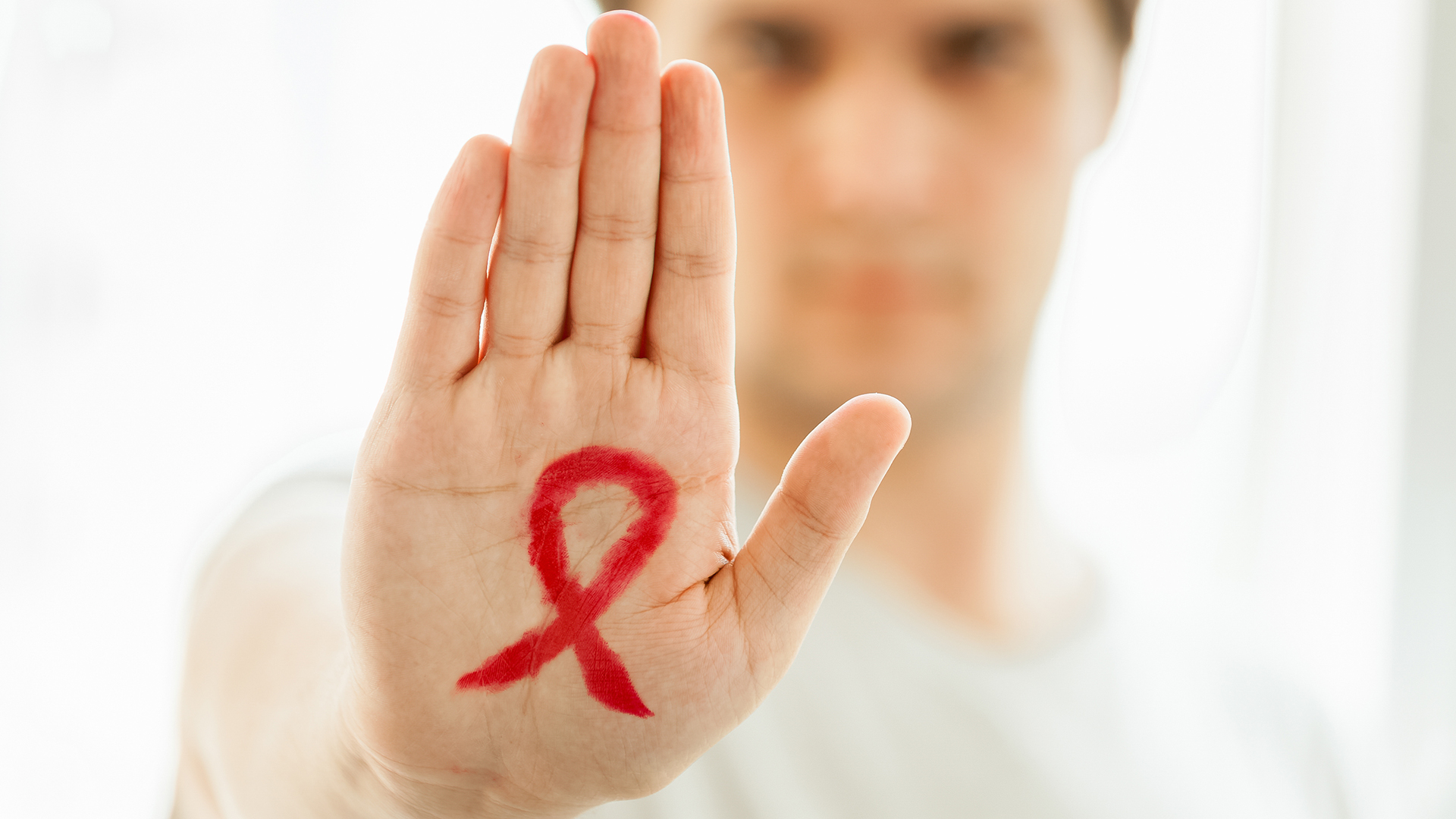
Panaritium on the finger is manifested by swelling and redness, pain and fever, as well as other symptoms of general intoxication.
Diagnostics of the panaritium is carried out taking into account the patient’s complaints and examination by a specialist.In cases of suspicion of deep forms (bone / articular) pathology, an x-ray is prescribed. The initial stage of the disease can be treated with conservative methods, at later stages an abscess is formed, which requires drainage and opening, and amputation is performed in a neglected form.
Panaritium is mainly on the hands, it is extremely rare to find panaritium on the legs. Belongs to the category of pathologies of purulent surgery. The development of pathology occurs with the participation of pyogenic microorganisms, which penetrate the tissues through the slightest defects and cracks in the skin.The most common microorganism is staphylococcus aureus.
The mild stage of panaritium on the arm or other part of the body is characterized by swelling, pain and redness.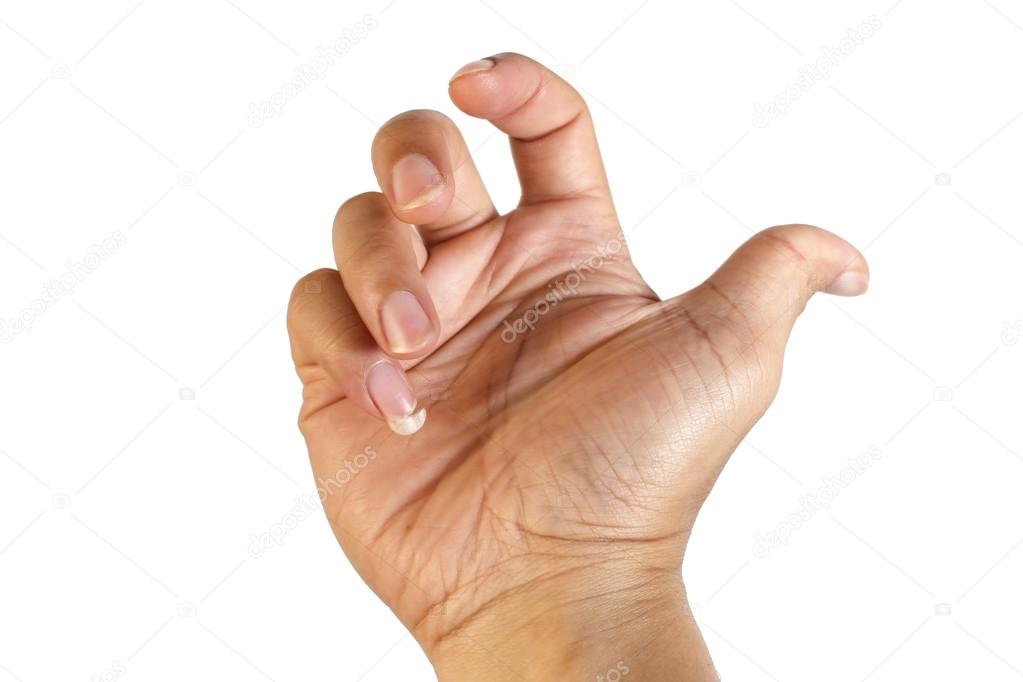 The severe stage is accompanied by chills and high fever. Painful sensations are characterized by sharpness and pulsation, often leading to insomnia.
The severe stage is accompanied by chills and high fever. Painful sensations are characterized by sharpness and pulsation, often leading to insomnia.
Symptoms
The form of the disease directly affects the symptoms of panaritium, while there are a number of similar symptoms. The initial stage is mild edema and mild painful sensations.
All subsequent stages – an increase and increase in pain, swelling, redness, burning. In this case, the painful sensations are characterized as bursting and twitching, strong in intensity.
A distinctive feature of any form of pathology is the presence of a purulent focus, during the formation of which the patient feels the symptoms of intoxication – weakness, increased fatigue, high temperature, headaches. At the same time, deep forms of the disease have more pronounced signs of intoxication.
Characteristic features of various types of felon:
- cutaneous or panaritium of the nail and the area of the nail phalanx – redness, peeling of the skin at the site of redness, the formation of a blister with a cloudy liquid, unsharp intensifying pains, pulsation, stem lymphangitis or the presence of a red strip from the hand to the forearm at the location of the lymph nodes;
- periungual or paronychia appears as a felon on the finger after unsuccessful manicure and nail treatment, as well as with hard physical labor – slight swelling, redness, rapid filling of the entire nail and the formation of an abscess, pain at the site of the focus;
- subungual panaritium or a complication of the periungual, independently appears panaritium on the thumb as a result of puncture wounds or splinters – severe pain, rapid formation of an abscess, severe edema, general malaise and high fever;
- subcutaneous panaritium with infection of deep puncture wounds – redness and local pain becomes intense after a few hours, swelling is large, suppuration is accompanied by chills and high fever;
- Bone felon in case of infection of an open fracture of bones or in the spread of infection from a subcutaneous type of felon – destruction of bone with severe pain, flask-like appearance of the affected limb, smooth and shiny skin, chills and fever;
- articular develops when infected through open fractures or is a complication from a tendon, subcutaneous and bone type – pain when the joint moves and mild swelling turns into inability to move the joint due to pain and swelling, as a result, a fistula is formed;
- Tendon felon on the toe or purulent tenosynovitis – uniform swelling, outwardly bent toe, intense increase in pain during movement, lack of appetite, weakness, high fever, delirium and confusion.
 The most dangerous type of pathology due to the rate of spread of pus into adjacent tissues.
The most dangerous type of pathology due to the rate of spread of pus into adjacent tissues.
Do you have symptoms of felon?
Only a doctor can accurately diagnose the disease.
Do not delay the consultation – call by phone
+7 (495) 775-73-60
The reasons for the emergence and development of
Treatment for panaritium depends on the cause of the disease. The most common cause of pathology is staphylococcus, which has got under the skin through cuts, wounds, drifts or burrs, etc.etc.
Pathogens can also be – streptococcus, Escherichia coli, Gram-negative or Gram-positive bacillus, Proteus, other causative agents of putrefactive infection.
Infection routes and risk factors
The risk group for developing the disease includes:
90,022 90,023 children;
The most common place of occurrence of pathology is 1, 2 and 3 fingers of the right hand.
External factors in the development of pathology:
- humidification,
- vibration,
- maceration,
- systematic cooling,
- effects of irritants,
- pollution.
Internal factors in the development of the disease:
- endocrine diseases and disruptions;
- weakening of the immune system;
- vitamin deficiency;
- impaired metabolism.
Classification
The classification of the panaritium is carried out according to the location and nature of tissue damage:
- cutaneous – mild form, abscess in the thickness of the epidermis;
- periungual – an abscess near the nail fold;
- subungual – an abscess under the nail plate;
- subcutaneous – on the surface of the palm;
- bone – accompanied by bone decay;
- articular – interphalangeal joints and metacarpophalangeal joints;
- osteoarticular – a progressive form of articular, affects the joint and bones of the phalanges;
- tendon – the most dangerous, affects the tendons.
Complications
In the absence of timely treatment, the process of spreading a purulent infection affects vital functions:
- Untimely treatment of panaritium on the finger leads to pandactylitis, which can lead to amputation of the finger;
- damage to the tendons and joints leads to a loss of movement activity;
- damage to the tendon sheath leads to phlegmon of the hand;
- damage to the bones is dangerous for the development of osteomyelitis.
When to see a doctor
A surgeon, traumatologist, osteopath treats panaritium. If there is a suspicion of purulent inflammation, it is necessary to consult a surgeon. He will establish an accurate diagnosis and tell you how to treat felon.
You can make an appointment with any of the above specialists at Medicina JSC (Academician Roitberg’s clinic) in the center of Moscow near the Mayakovskaya, Belorusskaya, Novoslobodskaya metro stations.
Diagnostics
Only after accurately determining the type and shape, the doctor decides how to cure felon. Therefore, it is important to pass the examination promptly. Diagnostics begins with the collection of complaints and symptoms of pathology. The form of the disease is determined by palpation with a bulbous probe of the location of the abscess.
X-rays are taken to identify bone and joint lesions. In this case, for the articular form of the disease, x-rays are performed on the fingers of the same name on both hands (both healthy and affected).
In JSC “Medicine” (clinic of Academician Roitberg) you can undergo any diagnostic study with high accuracy of results.
Treatment
Treatment of a superficial disease is carried out on an outpatient basis, and for deep forms – in a purulent surgery hospital.
The early stages of the disease involve conservative treatment – darsonval, thermal procedures and UHF, baths, the application of compresses and medicinal ointments, antibacterial and antifungal drugs.In the event that positive dynamics do not occur in a week, then a surgical operation is prescribed.
The advanced stages of superficial forms and all deep forms of pathology require surgical intervention. Panaritium surgery involves opening and draining for a full outflow of purulent contents.
The tactics of surgical intervention for bone and articular forms is guided by the degree of preservation of the affected tissues. Partial destruction involves the removal of panaritium and damaged areas of tissue, and total spread involves amputation.In this case, antibacterial, analgesic and anti-toxic therapy is carried out.
General principles of treatment of the disease:
- complete anesthesia;
- complete exsanguination during the operation;
- complete removal of pus and affected tissues;
- adequate management of the postoperative period;
- is a variant of surgical intervention that combines functional and cosmetic principles.
Home Remedies
At home, you can make compresses and baths during treatment, but only after consulting a specialist. Daily steaming baths with potassium permanganate have an effective effect. When preparing the baths, it is important to observe the temperature regime of the water – not hot or cold, but the color from the addition of potassium permanganate – light pink. The affected limbs should be placed in the prepared solution for no more than 5-7 minutes.Next, you need to blot the limb with a clean napkin or sterile bandage. After the bath, it is necessary to apply a bandage with a sucking-out therapeutic ointment prescribed by the doctor. The bandage and limb must be tightly fixed.
Preventive measures
Preventive measures felon:
- antiseptic treatment of any damage to the skin;
- optimal hand cleanliness;
- use of moisturizing creams;
- Neat cutting of fresh fish, meat and vegetables / fruits;
- Careful selection of a manicurist – compliance with the rules of disinfection.
What infections can affect fingers?
With the help of hands, a person interacts with the outside world, so they tend to come into contact with bacteria and viruses, which can lead to infection on the skin of the hands and fingers. There are different types of skin infections on the fingers, and serious complications can occur if not treated properly. Typically, these infections are caused by bacteria, but in some cases, viruses can also act as pathogens.The most common symptoms of infections affecting fingers are redness and thinning of the skin, but each infection also has symptoms specific to it.
Panaritium. Acute purulent inflammation of the tissues of the fingers and, more rarely, of the toes. The infection invades the pad of the finger and the soft tissue around it and is usually caused by a puncture wound. The causative agent of infection is often staphylococci and streptococci. A puncture wound allows these bacteria to penetrate into the deeper layers of the skin and multiply, creating typical symptoms – swelling and soreness of the affected area, and the formation of pus under the skin.
Phlegmon. Acute diffuse purulent inflammation of the subcutaneous fatty tissue. The bacteria that cause felon are also responsible for the development of phlegmon. They enter the lower layers of the skin through an open wound and can spread to other parts of the hands through the bloodstream. Phlegmon symptoms include redness, tenderness, and flushing of the affected skin area.
Nogtoed (paronychia). Inflammation of the periungual fold. The tissues around the edges of the nails are ideal places for bacteria to enter.The causative agent of nail eaters are also staphylococci and streptococci, in some cases – fungi. The infection can spread to surrounding tissue. Symptoms that accompany paronychia include redness and swelling near the nail that is painful to the touch and produces pus.
Herpetic felon . An infection caused by a virus that mainly affects the tip of the finger. It may also present with paronychia-like symptoms, but does not respond to antibiotics during treatment.Herpes simplex virus type I or II is responsible for the development of this infection. People who work with human body fluids, such as dentists or other healthcare professionals, are at increased risk of contracting this infection. Symptoms accompanying herpetic felon are swelling and soreness of the affected area, the formation of pus under the skin. An open wound may form on the affected area of the skin.
“Deep” infections. These infections affect the deeper layers of the skin as well as blood vessels, tendons, or muscles.One type of infection is infectious flexor tenosynovitis (an acute infection of the flexor tendon sheaths). These infections often enter the body through a puncture wound or deep cut.
Some people, such as those with weakened immune systems or those with diabetes mellitus, may be at increased risk of infection. Common symptoms and signs of “deep” infections include pain when moving (bending, extending) certain parts of the hand, such as the finger.The affected area becomes red and very sensitive to touch. The center of infection may have a soft spot where pus forms. As the infection progresses, the affected toe will be in a slightly bent or partially bent position at rest.
Treatment of infections affecting fingers varies depending on the severity of the course and requires a mandatory visit to the doctor. Bacterial infections can be treated with antibiotics. In some cases, surgery may be required.
Based on materials from www.medicalnewstoday.com
90,000 Opening of a felon on the finger, treatment, price
Treatment of panaritium consists in opening the site of purulent inflammation by the surgeon and cleaning the purulent sinus to prevent further spread of the infection.
Home treatment on your own is highly discouraged, since the development of suppuration passes rather quickly, as a result of which delay can lead to the loss of a finger.
It is especially necessary to carefully monitor the appearance of the first signs of panaritium in children, since they often come into contact with the ground and objects on the street while playing, which can lead to microcracks in the skin of pyogenic microbes.
Reasons for panaritium
The causes of panaritium are the ingress of staphylococci and streptococci under the skin through cracks and injuries on the toes and hands. To reduce the risks, it is worth washing your hands thoroughly after contact on the street, using a plaster for injured fingers and disinfecting wounds in case of injuries.
Injuries may seem minor, but at the first appearance of suppuration, you should consult a doctor, since delay can have serious consequences.
Treatment method
The panaritium on the arms and legs is opened on an outpatient basis, depending on the form of manifestation.
Skin felon
Pus is found between the epidermis and the dermis. The surgeon opens the top layer of the skin and releases the pus, and then applies a bandage.No stitches are required as the skin heals like a small cut. The procedure is painless, so even local anesthesia is not always used.
Subcutaneous panaritium
In this case, the purulent process spreads to the subcutaneous tissue, in which necrotic changes begin to spread. The surgeon makes an incision depending on the accumulation of pus and excises the necrotic tissue, otherwise the decay process will continue.
After the pus has been removed, the wound is drained.
The procedure is accompanied by local anesthesia.
Nail panaritium
When fighting periungual panaritium, the task is not only to cure the finger, but also not to damage the growth zone of the nail, because this can ruin the appearance of the finger or result in the loss of the nail. Paronychia is not difficult to treat, and is similar to the usual cutaneous panaritium. However, if run, tissue excision may be required.
Subungual felon
When pus forms under the nail plate, it often flakes off.In this case, the main thing is not to waste time and start treatment as soon as possible, since delay can lead to loss of the nail. Local anesthesia may be used for treatment.
There is a tendon and bone panaritium, often resulting from complications.
Treatment progress
1. Survey-consultation with a surgeon.
2. The patient changes clothes, goes to the sterile manipulation room. operating room.
3. Local anesthesia.
4. An incision is made with a scalpel, the contents are removed, the cavity is processed and drainage is placed (“elastic”, which does not allow the edges of the wound to grow together so that the pus can flow out).
5. The patient performs daily dressings until he recovers.
Operations are performed on an outpatient basis – in 1.5-2 hours the patient can return to his normal life.
Indications for opening a panaritium
The very presence of a felon is already an indication for going to a doctor and, most likely, for an operation.
At the same time, purulent inflammation is always dangerous – it is usually removed on the day of treatment. Running inflammation (most often due to attempts at self-treatment) can lead to very serious consequences – the most difficult of which is the loss of a finger.
Contributing factors:
● diabetes mellitus;
● avitaminosis;
● lack of hygiene;
● problems and immunity;
● frequent injuries to the skin of the hands and feet.
Appointment to a doctor
The Vocation Clinic employs experienced surgeons who have undertook many complex surgeries. The clinic is equipped with modern technology and provides opportunities for effective work.To make an appointment, you can use the registration form on the website or call the clinic by phone 8 (846) 300-40-72
90,000 Panaritium | Surgery | Diseases
Panaritium – treatment in Lipetsk.
Panaritium is the general name for a variety of acute purulent inflammatory processes in the soft tissues and bones of the fingers (less often – the toes). Panaritiums are very common. The cause of panaritium is the penetration of various microbes into the tissues of the fingers.They usually penetrate through abrasions, small wounds, injections, scratches, cuts that look minor and sometimes go unnoticed and not treated in time. Taking into account the peculiarities of the structure of the skin and blood supply to the hand, a small wound channel closes very quickly. Therefore, the infection remains in the wound, leading to the formation of pus. Pus, unable to drain out of the wound, rushes deep into the bridges of the subcutaneous fat layer, involving muscles, ligaments, tendons, joints and bones in the inflammatory process.
Taking into account the location and nature of tissue damage, the following types of felon are distinguished:
- superficial panaritiums: cutaneous, subcutaneous, nail, periungual or paronychia and subungual;
- deep panaritiums: tendon, bone, articular and pandactylitis, in which all tissues of the finger are affected.
Deep panaritiums are mainly a complication of superficial panaritiums.
Cutaneous felon is the mildest form in which an abscess forms in the thickness of the skin in the area of the nail phalanx.With cutaneous panaritium, the skin turns red, then a bubble forms in the center of the redness, filled with a cloudy or grayish-yellow liquid that shines through the skin. At first, the pain is mild, then they gradually intensify, become pulsating.
Subcutaneous panaritium – occurs most often. With subcutaneous panaritium, an acute purulent process develops in the subcutaneous tissue when small but deep puncture wounds are infected (an injection with a plant thorn, awl, fish bone, needle, etc.)etc.). Initially, there is slight redness and local pain. Within a few hours, the pain intensifies, becomes pulsating, the finger swells. Sometimes significant pain in the finger causes great suffering to the patient and even deprives him of sleep. Chills and a rise in temperature up to 38 degrees and above are noted. If untreated, the purulent process may spread to deep anatomical formations (bones, joints, tendons). This situation requires urgent medical attention.
Periungual panaritium (paronychia) is a purulent inflammation of the roller surrounding the nail.Often this process develops after an unsuccessful manicure. Local edema and redness are noted, then an abscess is formed, which shines through the thin skin of this area. There are severe pains in the area of inflammation, but the general condition is almost not affected. A spontaneous opening of the abscess is possible, however, with the progression of the process, pus can break through under the base of the nail, spread into the subcutaneous tissue, onto the bone and even the joint.
Subungual felon .Usually it is a complication of paronychia, but can develop as a result of a splinter, puncture wound in the area of the free edge of the nail. Edema of the nail phalanx appears, pus appears under the nail. Since the abscess in this area is “crushed” by the nail plate, the subungual panaritium is characterized by intense pain, a significant increase in temperature, and general malaise.
Bone panaritium – is a secondary process, with the spread of a purulent-inflammatory process to the bone.Most often, it develops against the background of the previous subcutaneous panaritium. After opening the subcutaneous abscess, the swelling goes away, the pain dulls and becomes constant. Purulent contents are separated from the wound surface. Gradually, the phalanx swells and the finger takes on a bulbous appearance. Touching brings severe pain, but the pain is diffuse and it is impossible to determine the area of maximum pain. Chills and fever are noted, and the patient cannot sleep.
Articular panaritium – serous-purulent inflammation of the interphalangeal and metacarpophalangeal joints.Infection into the joint can get primarily – as a result of a penetrating injury or open intra-articular fractures, or secondarily – through the spread of a purulent process (with tendon, subcutaneous and bone panaritium). The joint panaritium is characterized by painful sensations in the fingers, deformation of the joint (the finger takes the form of a spindle), pronounced edema on the dorsum of the finger and redness. On palpation, the tension of the joint capsule is determined; a fistula may form on the back of the finger.
Primary panaritiums may end with recovery, with secondary outcomes, amputation or ankylosis of the joint may become.
Tendon panaritium – purulent inflammation of the tendon sheaths of the flexors of the fingers. One of the most severe and dangerous forms of purulent inflammation of the finger in terms of treatment and prognosis. This is due to the fact that pus quickly spreads through the tendon sheaths, passing to the muscles, bones, soft tissues of the palm and even the forearm.If untreated, the tendon completely melts and the finger loses its function.
Tendon felon, like other types of felon, can develop both with direct penetration of infection – puncture wounds (with a needle, nail), and with its spread from other parts of the finger. With tendon panaritium, thickening and redness of the entire finger is observed, the movements are sharply painful, the finger becomes sausage-like. The swelling can spread not only to the palm, but also to the back of the hand.The position of the hand is forced, it is in a bent state. Very severe pain occurs when moving. There is a significant increase in temperature, weakness, lack of appetite. Confusion and delirium are possible.
With a running felon, when purulent inflammation covers the entire thickness of the finger, they speak of pandactylitis. Pandactylitis is difficult to treat and often results in toe amputation.
If you find symptoms of panaritium, you should definitely consult a doctor. Surgeons are involved in the treatment of panaritiums. With superficial forms, the patient is treated on an outpatient basis, with deep ones, hospitalization is necessary.
At the Andromeda Medical-Surgical Clinic K , qualified surgeons will provide you with advice and surgical assistance.
90,000 Purulent diseases, symptoms and treatment
Purulent diseases are widespread enough.
Such diseases are dangerous in that if treatment is started late, the likelihood of complications is very high, among which there may be even partial, and in rare severe cases – complete disability.
SYMPTOMS OF DEVELOPMENT OF PURULENT DISEASES
With this pathology, an inflammatory reaction occurs with the development of general and local changes.
The severity of the disease depends on the extent of the inflammatory process and the general reactivity of the body.
At the same time, there is a universal rule according to which any purulent process is an indication for surgical treatment of a disease.
Symptoms that are characteristic of such diseases:
An increase in body temperature (sometimes up to febrile values),
Symptoms of purulent intoxication are headache, weakness, deterioration in performance, apathy, weakness, loss of appetite, drowsiness, or, conversely, sleep disturbance.
Pain at the site of inflammation.
Hyperemia of the skin in the area of inflammation
Local temperature rise over the inflammation focus, smoothness of the contours of furrows and lines
All these symptoms are nonspecific and can be observed in any clinical form of pyoinflammatory diseases.
In addition, there are specific signs for each individual disease.
Depending on the location, it is possible to determine the involvement of certain areas in the pathological process and the likelihood of complications.
Forms of purulent diseases and their signs:
A boil is an acute purulent-necrotic inflammation of the hair follicle, sebaceous gland and surrounding subcutaneous tissue.
Panaritium is an accumulation of a discharge, predominantly purulent, under the skin in the phalanx area.In this case, general symptoms of the disease may be noted, but most often they are not significantly expressed. When viewed on one of the phalanges of the fingers, mainly the proximal, a zone of swelling, hyperemia is determined.
Furunculosis is the presence of several boils in different areas with a recurrent course. With furunculosis, patients must be examined to identify metabolic disorders (diabetes mellitus, vitamin deficiency).Treatment is complex, including immunotherapy.
A carbuncle is an acute diffuse purulent-necrotic inflammation of several nearby hair follicles and sebaceous glands with the formation of necrosis of the skin and subcutaneous tissue, accompanied by signs of purulent intoxication. Localization of carbuncles is most often observed on the back of the neck, interscapular region. Usually, the carbuncle is accompanied by lymphadenitis, and when localized on the extremities, lymphangitis.
Phlegmon is an acute purulent diffuse inflammation of cell spaces that does not tend to be delimited. This disease is caused most often by staphylococcus, as well as any other pyogenic microflora. The infection can penetrate into tissues through damage to the skin and mucous membranes, after various injections (the so-called post-injection phlegmon), by the lymphogenous and hematogenous route, during the transition of inflammation from the lymph nodes, carbuncle, boil, etc.on the surrounding fiber.
An abscess is a limited collection of pus in various tissues or organs, surrounded by a pyogenic capsule. Pathogens and ways of penetration of infection into tissues are the same as with phlegmon, although the percentage of anaerobic pathogens is much higher.
Hydradenitis is a purulent inflammation of the sweat glands. The infection gets through non-compliance with the rules of hygiene and excessive sweating.
Mastitis is an acute inflammation of the breast. Mastitis mainly develops in the postpartum period during lactation (lactational mastitis). The infection enters the gland tissue through microcracks in the nipple, as well as through the milk ducts during lactostasis.
Erysipelas. Erysipelas is called acute serous-exudative inflammation of the skin or mucous membranes. The infection gets through microcracks, wounds on the skin.
FEATURES OF TREATMENT OF PURULENT DISEASES.
Local therapy of the disease includes conservative and surgical methods.
Conservative methods of treatment are used in the early stages of the disease before the formation of an abscess, as well as in combination with surgical treatment for faster and more effective treatment.
Local treatment in the stage of infiltration includes the impact on it with the help of physiotherapy techniques.
It is imperative to use ointments, which include an antibiotic and antimicrobial substances.
SURGICAL TREATMENT
Depending on the size of the purulent focus, anesthesia may be used during treatment.
After opening the abscess during the surgical treatment of the disease, it is purified from purulent exudate.
Then it is washed with an antiseptic agent, antibiotic solutions.
After the end of the operation, the wound is never sutured tightly, for the best drainage.
Dressings consist in removing drains and replacing them with new ones, washing the wound with an antiseptic solution, filling the wound with an antibiotic ointment, applying a dressing to prevent wound infection.
Prevention of purulent diseases:
In the prevention of many purulent diseases, it is of great importance to improve the external environment in which a person lives and works, that is, to improve working and living conditions.
So, for example, in the prevention of a number of purulent diseases (furunculosis, pyoderma, etc.)an important role is played by measures of a general hygienic nature and skin care (especially for hands), etc.
Doctor surgeon, Sarapultsev German Petrovich.
Panaritium: Description, causes, symptoms, diagnosis and treatment
Panaritium in a child is an inflammatory process that occurs mainly in the tissues of the upper phalanx of a finger or toe. Panaritium is always preceded by minor penetrating injuries of soft tissues that have not undergone proper treatment with disinfectants, especially with damage to the epidermis in newborns.
Healed with local therapy, panaritium in newborns is prone to frequent relapses at an older age.
Taking into account the location and nature of the affected tissues, the following types of panaritium are distinguished: skin, periungual, subungual, subcutaneous, bone, articular, osteoarticular, tendon.
Reasons
The causes of panaritium are always associated with infection of the injured soft tissues of the fingers and toes in children. There are many ways of introducing infection: scratches left by animals, splinters, cuts not treated with antiseptics, scratches, abrasions of a finger, received when falling during outdoor games.Inaccurate or infrequent nail trimming, ingrown nails in newborns also often cause cuticle injuries, and later – periungual felon.
Symptoms
Symptoms of felon develop rapidly. First, the deep layers of the skin become inflamed, the surface of the skin turns red. If there is no treatment, a purulent process begins. A bubble with cloudy, grayish-yellow pus forms. The area of the abscess hurts and burns. At this stage, treatment cannot be postponed, the inflammation will worsen, the abscess will grow, penetrating even deeper into the tissues.
Different types of felon show their specific symptoms. But there are general signs that indicate an acute purulent inflammatory process:
– The finger of the hand, foot swells, swells, the surface of the skin turns red. If the suppuration worsens, the skin color becomes bluish.
– The inflamed area hurts a lot, the pain is pulsating, constant, intensifying.
– The mobility of the finger is limited, the child cannot bend, straighten the affected finger, every movement brings pain.
– Due to acute inflammation, the temperature rises.
Diagnostics
The diagnosis is made based on the clinical symptoms of the disease. To determine the shape of the panaritium and clarify the localization of the abscess, palpation is performed with a bell-shaped probe. To exclude bone and articular panaritium, X-ray is performed. It should be borne in mind that, in contrast to the bone panaritium, with the articular form of the disease, changes are not immediately detected and may be mild. Therefore, to clarify the diagnosis, comparative radiographs of the same healthy finger on the other hand or leg should be prescribed.
Treatment
Treatment of felon should be started at the earliest stage, as soon as the first symptoms become noticeable. Then you can do without surgery, limiting yourself to conservative methods of therapy. Conservative treatment is effective only during the serous-infiltrative stage of suppuration. Methods of local hypothermia, UHF therapy, sessions of electrophoresis, ultrasound, baths with salt and soda, dressings based on alcohol and drugs are used.
When the process is started, an operation is performed using local anesthesia.Alternative methods of anesthesia are sometimes used, including general anesthesia. The doctor makes tissue incisions in the affected area, removes dead skin areas, and injects a local antibiotic into the deep layers of the epidermis.
Viable tissue is drained, the incisions are disinfected, followed by dressing. Before dressing, the doctor carefully examines the incisions, whether there is a fistulous entrance to the deep layers of tissues, where the focus of suppuration is located.
So that the incisions heal faster and there is no re-infection, a course of local and general antibiotic therapy is prescribed – antibiotics and antiseptics.
Antibiotic therapy in the treatment of skin infections
Summary. Skin infections of mild to moderate severity are a common pathology. In the United States, about 10 million people visit emergency departments every year with traumatic soft tissue injuries of varying severity. The most common complication in these cases is wound infection. Since the 1960s, oral antibiotics have been used to treat skin infections.Oral therapy was sometimes combined with topical drugs, but they were judged to be less effective than oral drugs. It has now been proven that topical drugs are in some cases more effective than drugs taken orally.
PRIMARY SKIN INFECTIONS
Primary skin infections are infections in which the skin surrounding the site of the infection is not damaged.Pathogenic microorganisms, in most cases causing the development of primary skin infections, include Staphylococcus aureus and group A streptococci ( Str. Pyogenes ).
The most common primary skin infections are impetigo, folliculitis, cellulitis and furunculosis. Impetigo is characterized by the presence of elements of a rash such as blisters, with the rupture of which deep erosion is formed; when the erosion exudate dries up, thick, loose crusts of light yellow color are formed.Previously, it was believed that contagious impetigo has a streptococcal etiology, and the development of bullous impetigo is caused by S. aureus . Currently, the results of many clinical studies indicate a change in the prevalence of these pathogens: more often the primary causative agent of contagious impetigo is S. aureus . According to some authors, in 7798% of cases, the development of impetigo is caused by staphylococci, in 3% of cases only streptococci. It should be noted that the research was carried out among people living in countries with developed economies and relatively high living standards.In countries with a tropical climate and low living standards, the most common causative agent of contagious impetigo remains Str. pyogenes .
SECONDARY SKIN INFECTIONS
Secondary skin infections develop when the skin at the site of localization of the infectious process has already been damaged. As an example, secondarily infected traumatic skin lesions and secondarily infected dermatoses can be mentioned.
The most common secondary infection, in 80-90% of cases caused by streptococci and staphylococci, is exposed to such skin lesions as cuts, burns, wounds, including surgical ones.Secondary infected dermatoses develop as a result of superinfection of an already existing pathological process, such as eczema. The damaged skin is the entrance gate for the causative agent of infection, and the subsequent invasion and multiplication of bacteria lead to the development of the infectious process. The most common development of secondary infected dermatoses is caused by S. aureus and streptococci. It is assumed that staphylococci are not only the main etiological cause of the development of eczema, but also contribute to the occurrence of relapses of the disease, as well as worsen the course of an already existing pathological process.
MODERN THERAPY OF POLY AND MEDIUM SKIN INFECTIONS
Since the 1960s, oral antibiotics have been the mainstay of therapy for mild to moderate skin infections. In most countries, erythromycin, cephalexin and flucloxacillin are the current drugs of choice.
Despite the fact that oral antibiotic therapy is effective in many cases, it is not without its drawbacks. Oral antibiotics, due to their systemic activity, often cause the development of adverse reactions from the digestive tract, such as diarrhea or nausea.An important condition for maintaining the appropriate concentration of the antibiotic in the blood is its regular and frequent intake. Any violation of the regimen of taking or dosing the drug can significantly affect its effectiveness. When using antibiotics for systemic use, allergic reactions can also develop.
Another disadvantage of oral antibiotic treatment is the rapid development of drug resistance. For example, resistance S.aureus , caused by the use of lactam antibiotics, is quite common. According to some reports, its level in the world reaches 90%. About 10 years ago, the sensitivity of S. aureus to erythromycin reached 90%. An observation in which the course of various skin infections was studied showed that 51.5% of S. aureus strains found during bacteriological examination of pus in furunculosis were resistant to erythromycin, with impetigo this indicator reached 26.2%.
Some antibiotics for systemic use are used to treat nosocomial infections, which also leads to the development of resistance of pathogens to these drugs.Currently, many experts do not recommend prescribing antibiotics for local therapy, which include components that have a systemic effect. According to the literature, the resistance of pathogens develops as a result of the use of aminoglycosides, erythromycin and clindamycin for topical use.
FACTORS INFLUENCING THERAPY CHOICE
The choice of local or oral antibiotic therapy depends on many factors, but the location and prevalence of the infectious process are decisive.Local therapy is effective if the infectious process is superficial and localized. If the pathological process reaches deeper structures of the skin or its large area is affected, antibiotics for oral administration can be used. If there are manifestations of a systemic infection, such as fever, lymphadenopathy, or concomitant streptococcal pharyngitis, oral antibiotics are preferable. In some cases, a doctor may prescribe both local and systemic antibiotic therapy for a patient with a widespread skin infection or with a severe course of the infectious process.
Many clinical studies have failed to support the suggestion that topical therapy is less effective than oral medication for mild to moderate skin infections. For example, it has been proven that in mild to moderate skin infections, monotherapy with mupirocin (trade name BAKTROBAN) in the form of a cream or ointment is also effective and even in some cases exceeds the effectiveness of therapy with erythromycin, cloxacillin and cephalexin administered orally.Topical drugs are convenient to use and easier to dose than oral drugs. Given the choice of treatment, many patients would prefer topical therapy.
When conducting local therapy, the risk of developing systemic side effects, including from the digestive tract, is minimal. When taken orally, the antibiotic affects the microflora of the digestive tract, which often leads to the appearance of strains of microorganisms resistant to the action of the drug that populate the digestive tract.Against the background of the use of some topical antibiotics, such as mupirocin, the resistance of pathogens develops very slowly, in contrast to antibiotics given by mouth. In addition, a higher concentration of antibiotic, which is created at the site of infection, contributes to the eradication of a larger number of pathogenic microorganisms.
The results of a comparative study of the efficacy and safety of topical administration of mupirocin and oral erythromycin in the treatment of impetigo in children showed that mupirocin, in contrast to erythromycin, is significantly less likely to cause the development of side effects.
REQUIREMENTS FOR DRUGS FOR LOCAL THERAPY OF SKIN INFECTIONS
Antibacterials for topical use should:
- have the same efficacy as drugs intended for oral administration;
- be well tolerated; be active against all major pathogens that cause mild to moderate skin infections;
- are available in dosage forms suitable for both primary and secondary skin infections.
Antibacterial preparations for topical use should not:
- Cause cross-resistance to other similar antibiotics used to treat severe systemic infections;
- contain components that have a systemic effect.
Mupirocin, intended for the treatment of mild to moderate skin infections, is the drug that meets these requirements. It has unique pharmacological properties that distinguish it from other antibiotics:
- highly effective against both streptococci and staphylococci;
- antibacterial activity equivalent to that of oral antibiotics;
- does not contain components that have a systemic effect;
- chemical composition differs from other antibiotics; it is impossible to develop cross-resistance of microflora;
- does not irritate the skin; after 10 years of worldwide use, the resistance of pathogens to this drug is detected with a frequency of less than 1%.
These factors, combined with good tolerability and safety, make the use of mupirocin a reliable alternative method of local therapy for mild to moderate skin infections.
REFERENCES
- Atherton D.J. (1996) The clinical efficacy of mupirocin in the treatment of primary skin infections. International Clinical Practice Series, 12: 2535.
- Burnett J.W. (1962) Management of pyogenic cutaneous infections.N. Engl. J. Med. 266: 164169.
- Burnett J.W. (1963) The route of antibiotic administration in superficial impetigo. N. Engl. J. Med. 268: 7275.
- Barton L. L., Friedman A. D . (1987) Impetigo: a reassessment of etiology and therapy. Pediat. Dermatol., 4: 185188.
- Crawford W.W. et. al. (1979) Laboratory induction and clinical occurrence of combined erythromycin resistance in Corynebacterium acnes. J. Invest. Dermatol. 72: 187.
- Dajani A., Ferrieri P., Wannamaker L. (1972) Natural history of impetigo II. Etiologic agents and bacterial interactions. J. Clin. Invest., 51: 28632871.
- Dillon H.C. (1968) Impetigo contagiosa: suppurative and nonsuppurative complications I. Clinical, bacteriologic and epidemiologic characteristics. Am. J. Dis. Child, 115: 530541.
- Finnerty E.F., Folan D.W. (1979) Changing antibacterial sensitivities of bacterial skin diseases: office practice 19771978.Cutis, 23: 227230.
- Graham D.R. et al. (1980) Epidemic neonatal gentamycin methicillin-resistant Staphylococcus aureus infection associated with non-specific topical use of gentamycin. J. Paediat. 97: 972.
- Grunberg R.N. et al. (1996) Results of the Alexander Project: a continuing, multicenter study of the antimicrobial susceptibility of community-acquired lower respiratory tract bacterial pathogens. Diagn. Microbiol. Infect. Dis., 25: 169181.
- Kraus S. et al. (1997) Comparison of a new formulation of mupirocin calcium with oral cephalexin in the treatment of secondarily infected traumatic lesions (SITL). Proceedings of 37 th ICAAC, Toronto, Canada.
- Leyden J.J. (1997) Therapy for acne vulgaris. N. Engl. J. Med. 336 (16): 1156-1162.
- Leyden J.J. (1990) Mupirocin: a new topical antibiotic. J. Am. Acad. Dermatol., 22 (5Pt1): 879883.
- Leyden J.J. (1992) Review of mupirocin ointment in the treatment of impetigo. Clin. Pediatr. (Phila), 31 (9): 549553.
- Martin de Nicolas M.M. et al. (1995) In vitro activity of mupirocin and eleven other antibiotics against 1500 Spanish clinical isolates of Staphylococcus aureus causing hospital infections Rev. Esp. Quimioterap., 8 (2): 145150.
- Ohana N. et al. (1989) Skin-isolated community-acquired Staphylococcus aureus: in vitro resistance to methicillin and erythromycin J.Am. Acad. Dermatol., 3: 544546.
- Rice et al. (1990) Cost effectiveness of erythromycin versus mupirocin for the treatment of impetigo in children. Am. J. Dis. Child, 144: 443444.
- Rogers M. et al. (1987) A three-year study of impetigo in Sydney. Med. J. Aust. 147: 6365.
- Schachner L. et al. (1983) A therapeutic update of superficial skin infections. Pediatr. Clin. North Am., 30: 397404.
- Tunnessen W. (1983) Cutaneous infections. Pediatr. Clin. North Am., 3: 515532.
- Tunnessen W. (1985) Practical aspects of bacterial skin infections in children Pediatr. Dermatol., 2: 255265.
- White A.R. et al. (1984) Antibacterial activity of mupirocin, an antibiotic produced by Pseudomonas fluorescens. Royal Society of Medicine International Congress and Symposium Series, 80: 4355.
- Williams R.E.A. (1996) The clinical efficacy of mupirocin in the treatment of secondary skin infections.International Clinical Practice Series, 12: 923.
Summary. Infections of the lung and middle stage of severity are pathologies that often cause the disease. In the United States, 10 million people with traumatic problems in small tissues of a serious degree of severity are often murdered in the early days of great help. The most frequent acceleration in cich vipadkakh is the information of the wound. In the 1960s, fixing antibiotics for oral administration began to fix antibiotics for the treatment of infectious diseases.Incoli oral therapy was reduced with drugs for muscular consumption, however, they were used as less effective in patients with drugs, but they were taken in the middle. At the end of the day, it has been reported that drugs for muscular administration in some types are more effective, but not drugs that can be taken orally.
Key words: Infection, shkira, antibiotics, mupirocin, BAKTROBAN
Summary. Mild to moderate skin infections are quite often seen in general medical practice.In USA, about 10 mln patients with traumatic soft tissue injuries of various severity are admitted to emergency departments. The most common complication in such cases is wound infection. Since 1960-ies oral antibiotics have been implemented for treatment of skin infections. Oral antibiotics are sometimes combined with topical treatment, the latter usually being considered as less efficacious compared to oral drugs. For the time being it has been established that topical drugs in certain instances are more efficacious as compared to oral therapy.
Key words: infection, skin, antibiotics, mupirocin, BACTROBAN
The publication was prepared based on materials provided by the representative office of SmithKline Beecham Pharmaceuticals in Ukraine.
Representative office address: 252070, Kiev, Kontraktova pl.

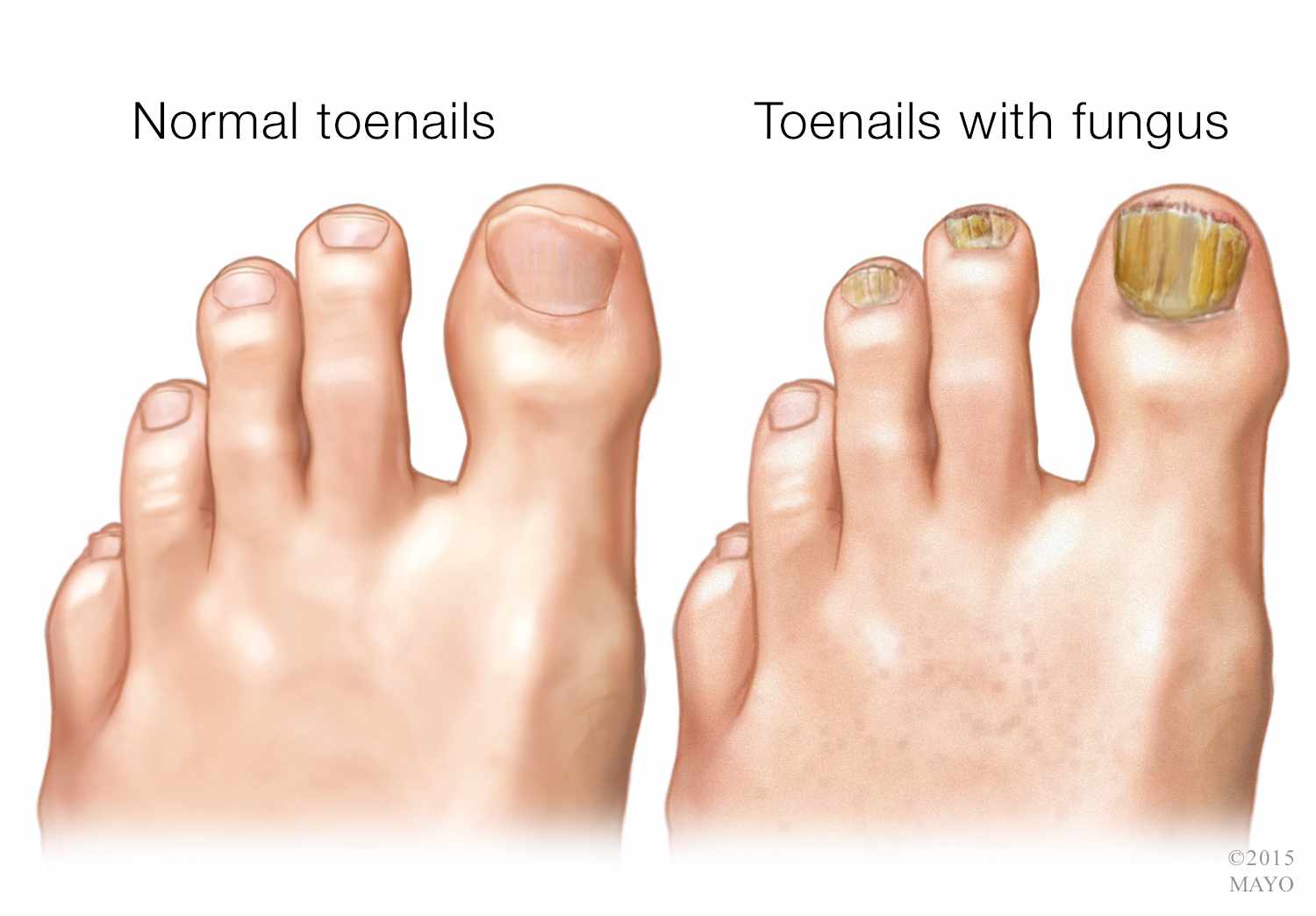 Usually an incision will be made on one or both sides of the fingertip. The doctor will then insert an instrument into the wound and break up the compartments to aid in the drainage. Sometimes a piece of rubber tubing or gauze will be placed into the wound to aid the initial drainage. The wound may also be flushed out with a sterile solution to remove as much debris as possible. These infections will require antibiotics. The wound will then require specific home care as prescribed by your doctor.
Usually an incision will be made on one or both sides of the fingertip. The doctor will then insert an instrument into the wound and break up the compartments to aid in the drainage. Sometimes a piece of rubber tubing or gauze will be placed into the wound to aid the initial drainage. The wound may also be flushed out with a sterile solution to remove as much debris as possible. These infections will require antibiotics. The wound will then require specific home care as prescribed by your doctor.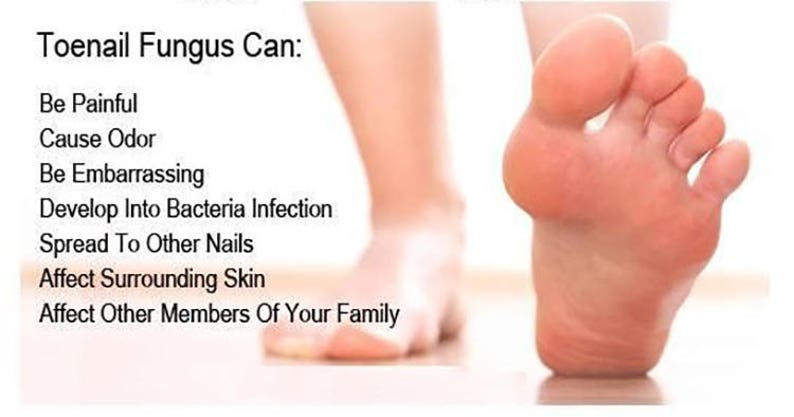 If the area is extensive or your immune system is weakened, then you may be treated in the hospital with intravenous antibiotics.
If the area is extensive or your immune system is weakened, then you may be treated in the hospital with intravenous antibiotics. This infection often requires treatment with IV antibiotics.
This infection often requires treatment with IV antibiotics. Topical steroids may be used to treat the infection.
Topical steroids may be used to treat the infection.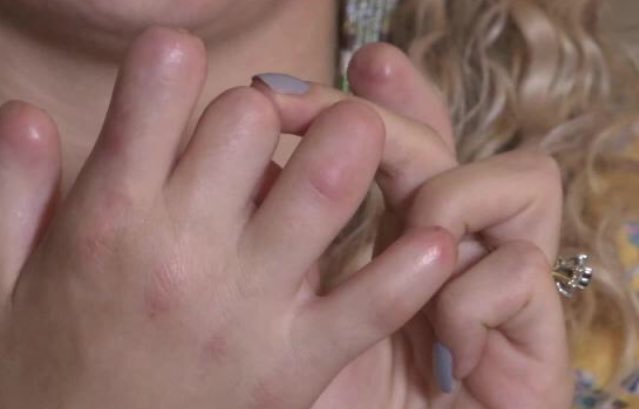 Urgent surgical attention is needed because the joint cartilage can be destroyed in just a few days. If not caught early, septic arthritis may require weeks of antibiotic treatment and several surgeries.
Urgent surgical attention is needed because the joint cartilage can be destroyed in just a few days. If not caught early, septic arthritis may require weeks of antibiotic treatment and several surgeries.:strip_icc():format(jpeg)/kly-media-production/medias/1353044/original/026754300_1474538417-kaki-diabetes.jpg) The most dangerous type of pathology due to the rate of spread of pus into adjacent tissues.
The most dangerous type of pathology due to the rate of spread of pus into adjacent tissues.